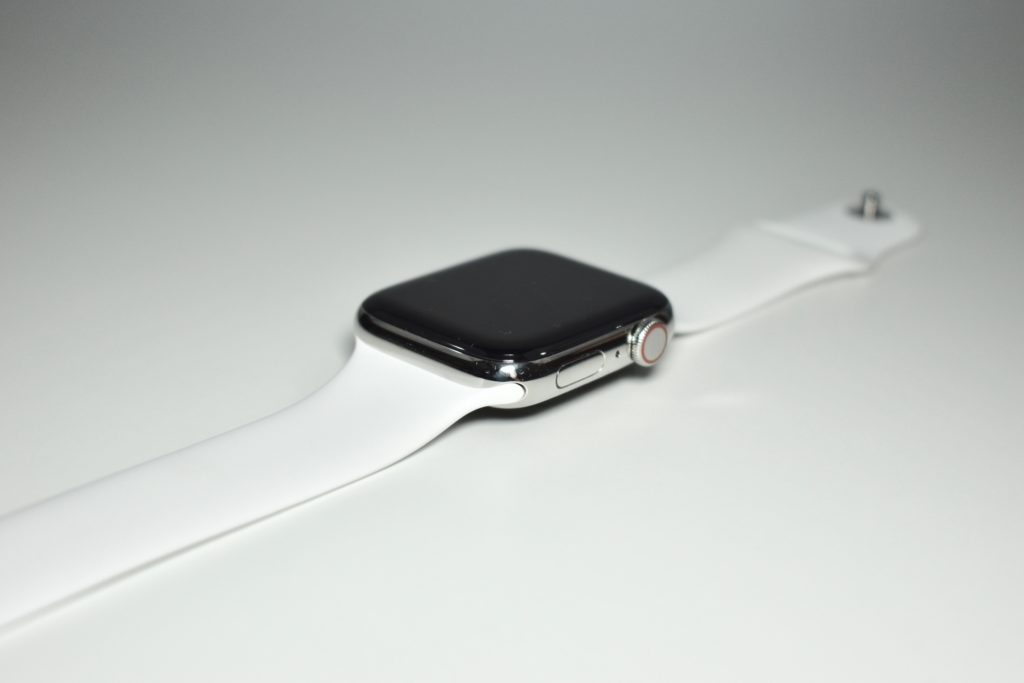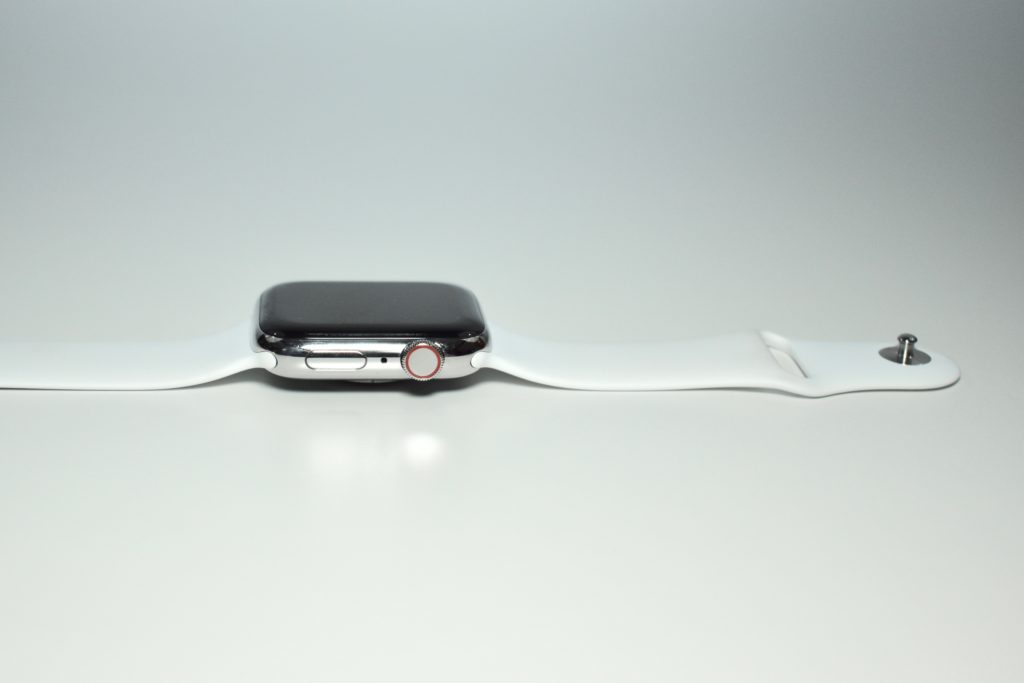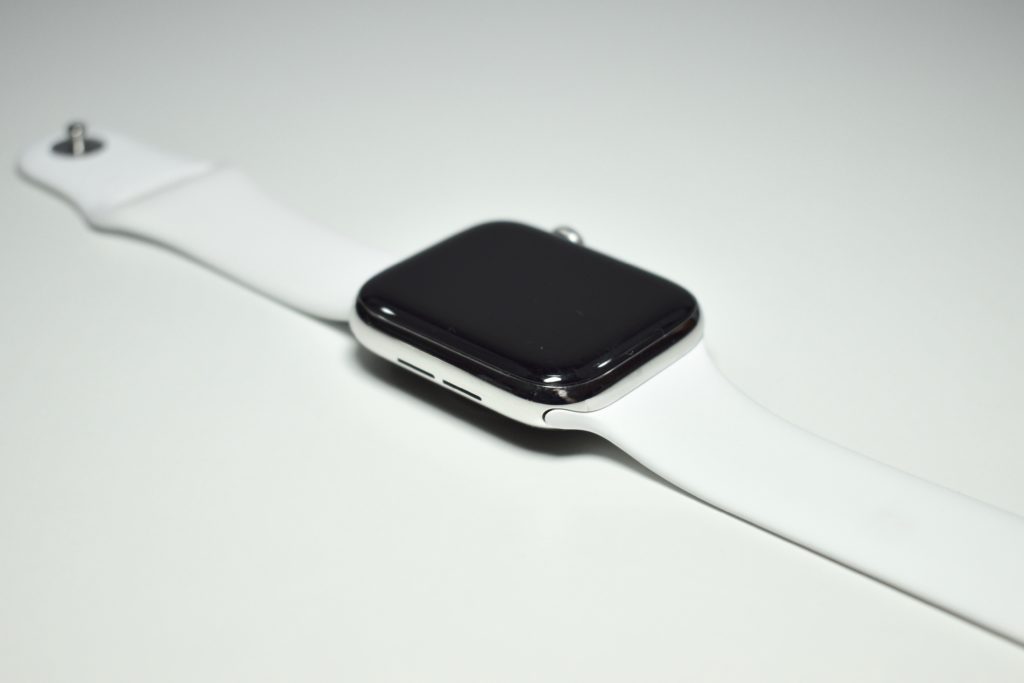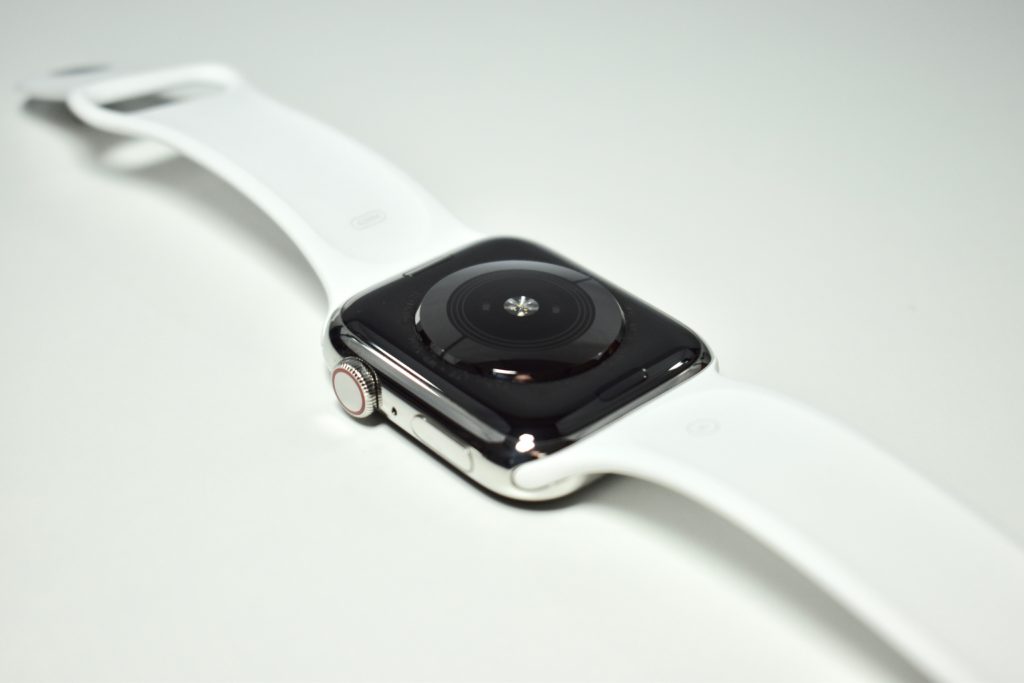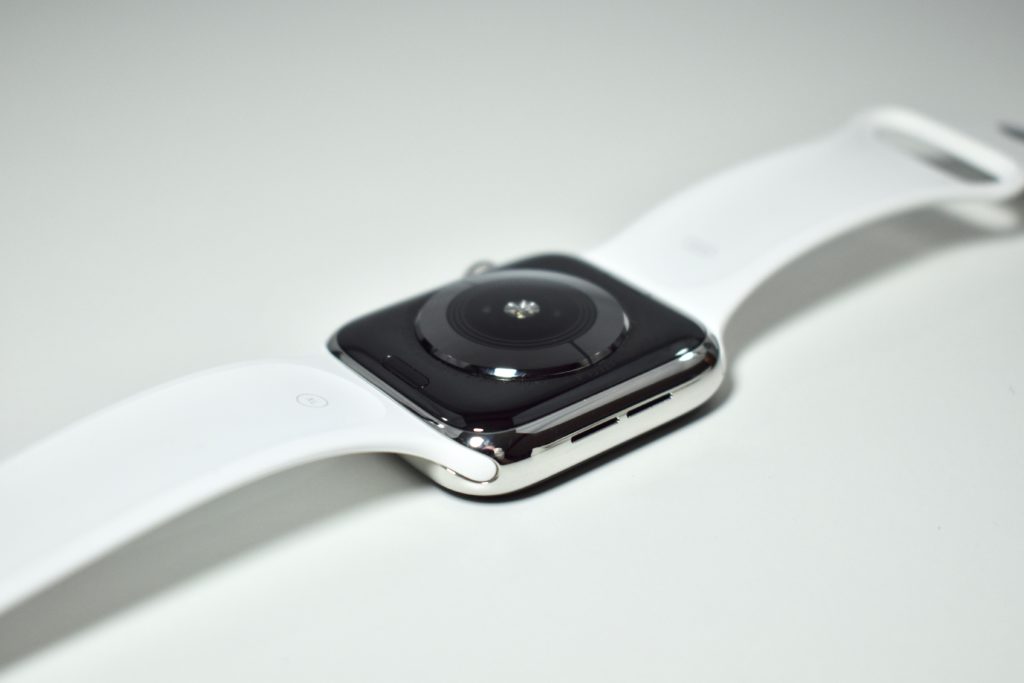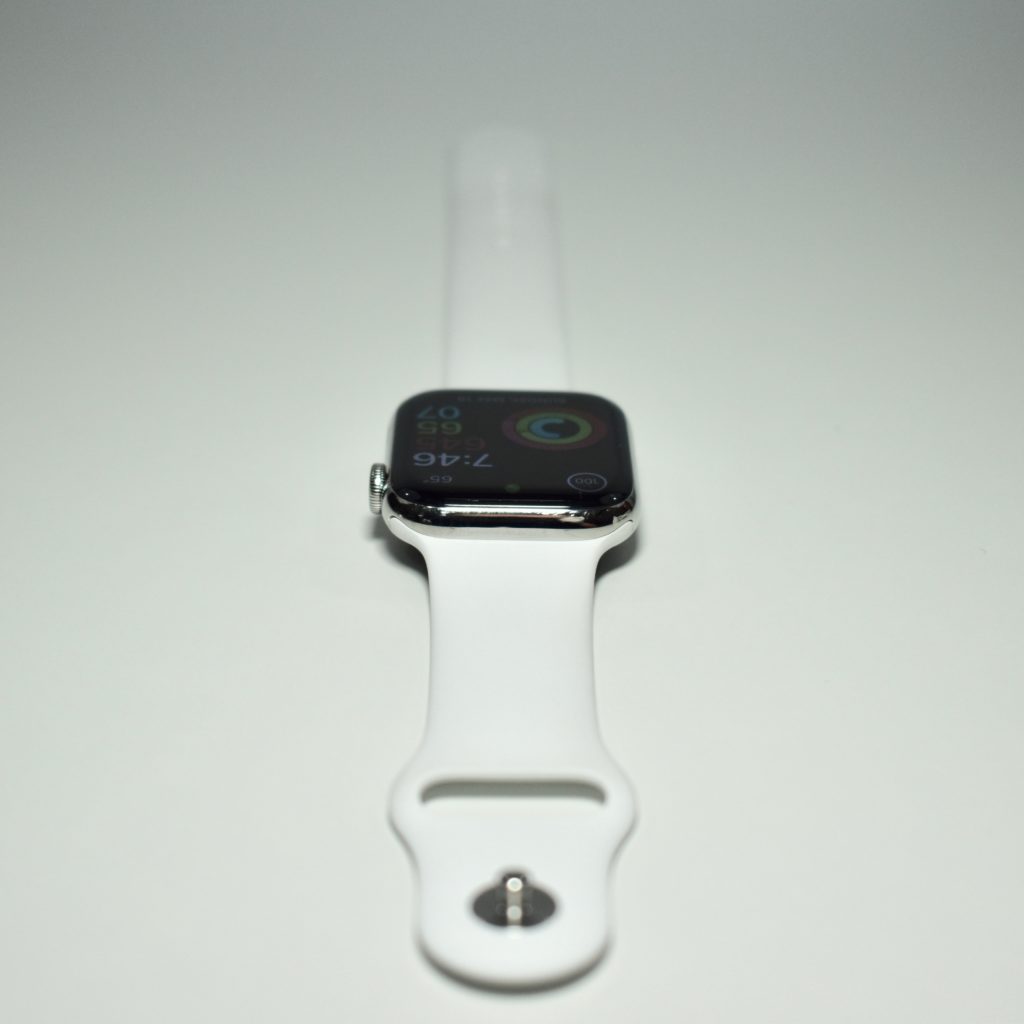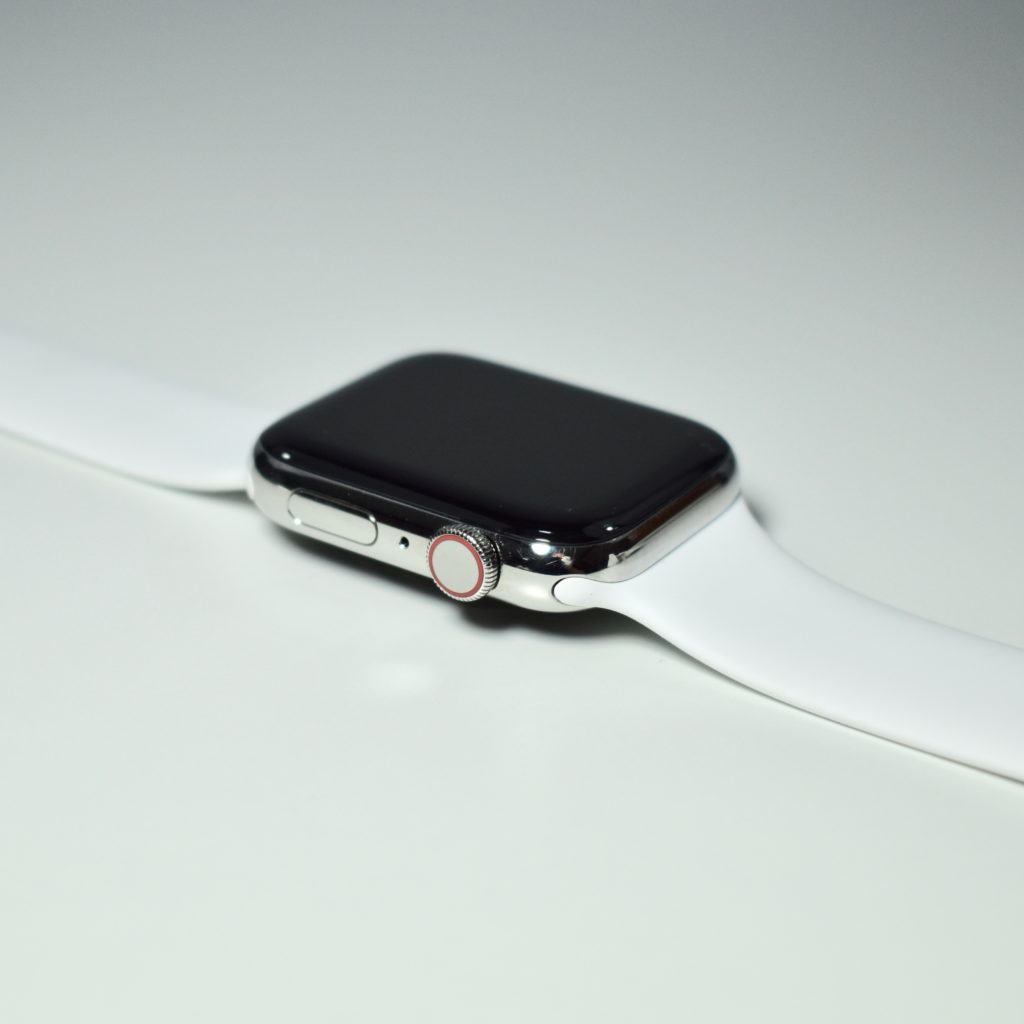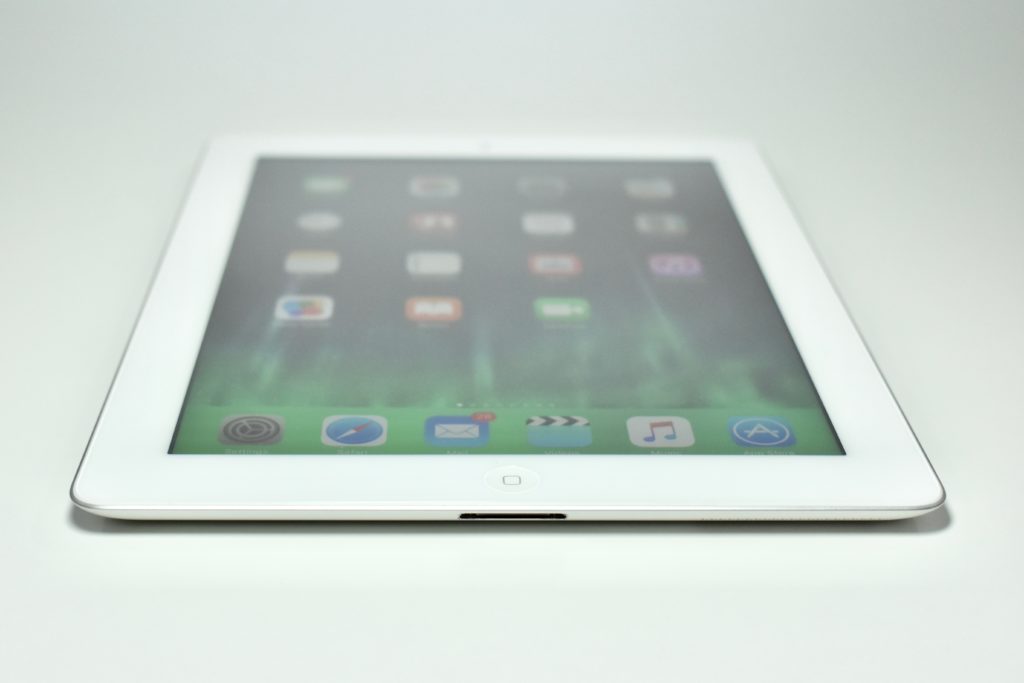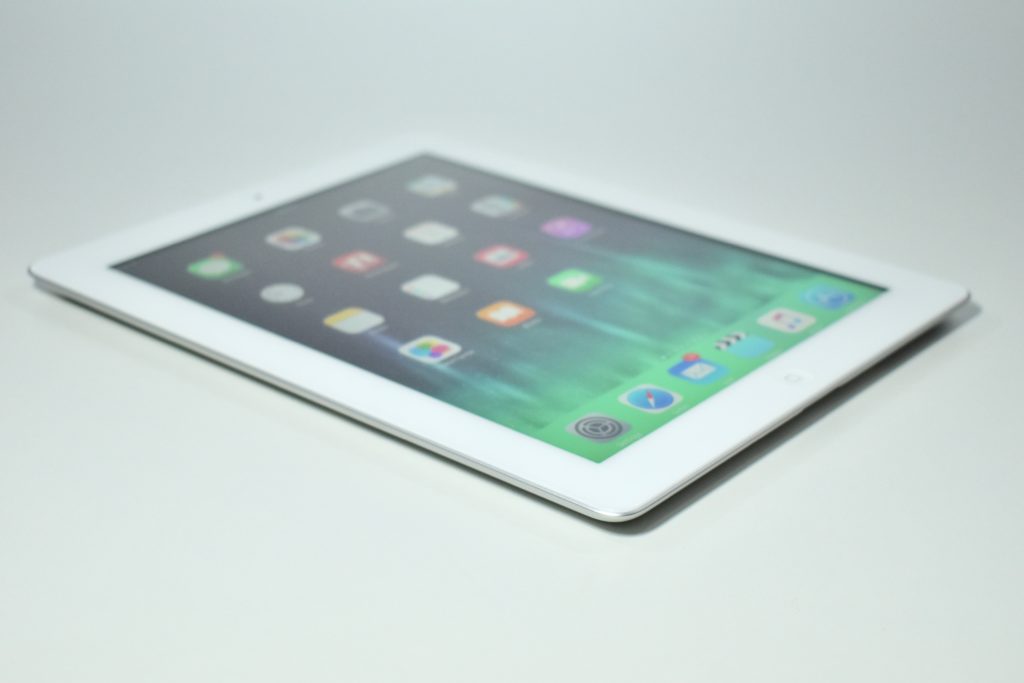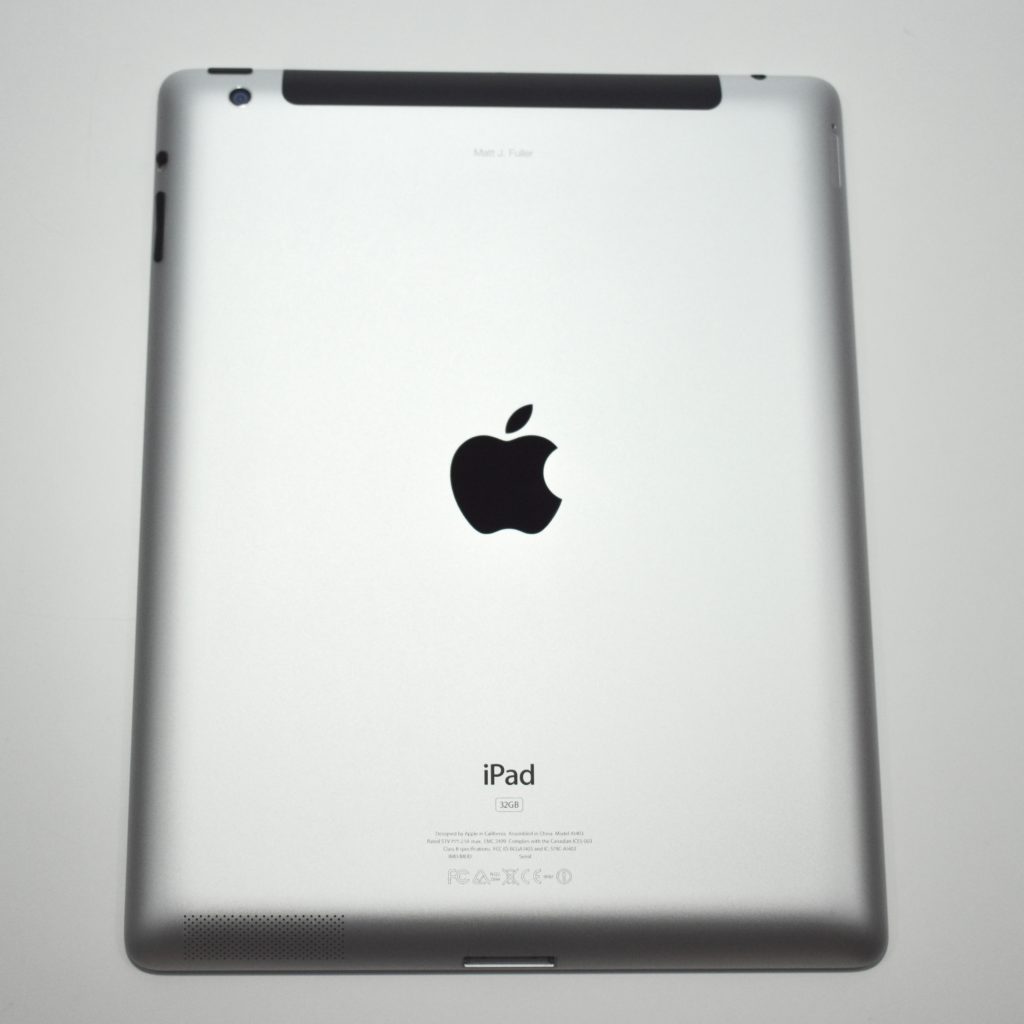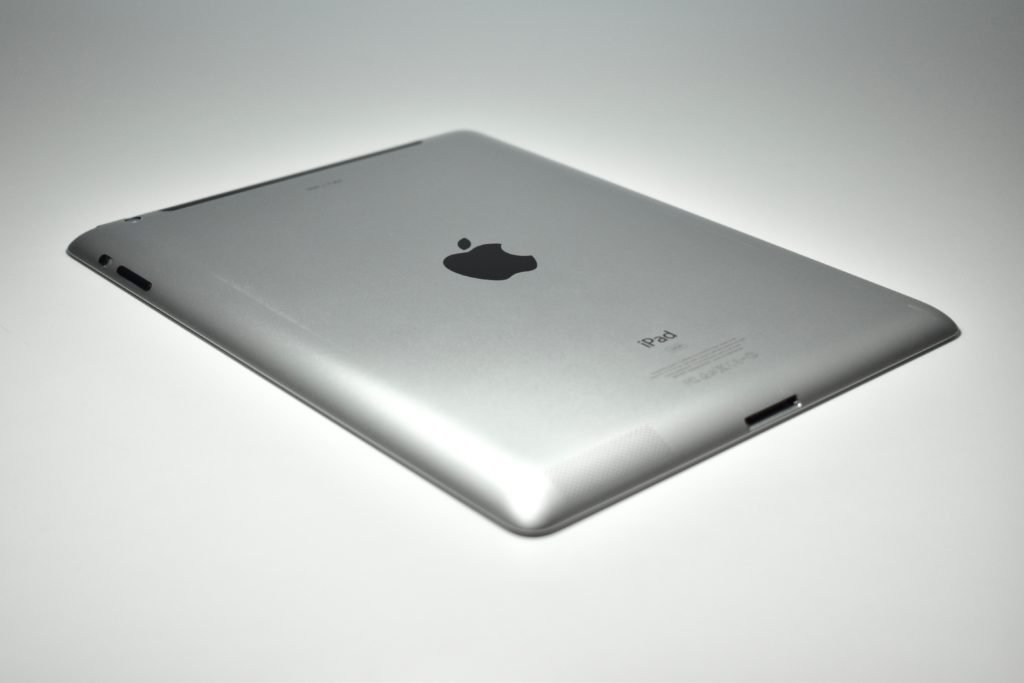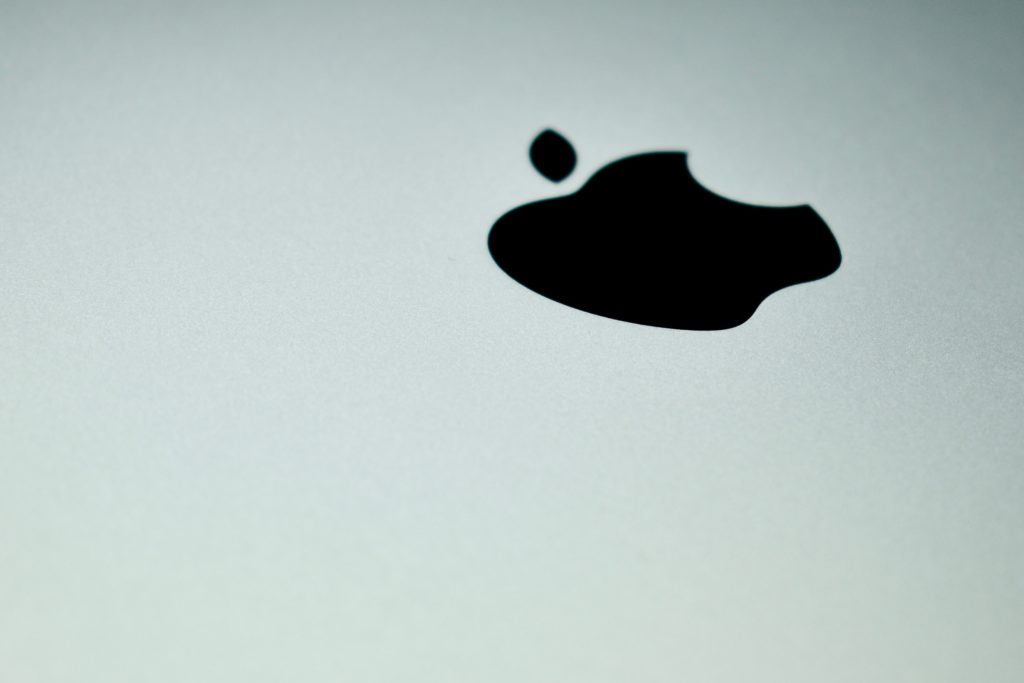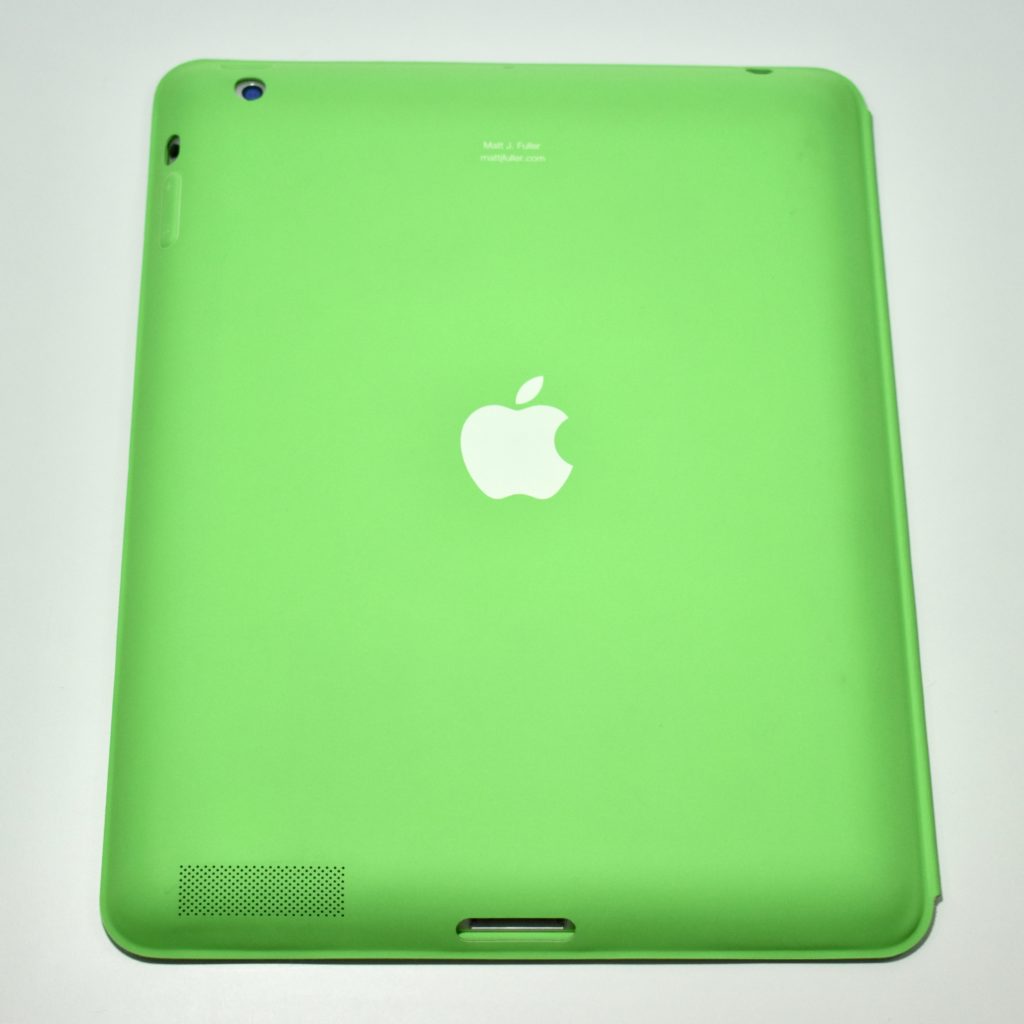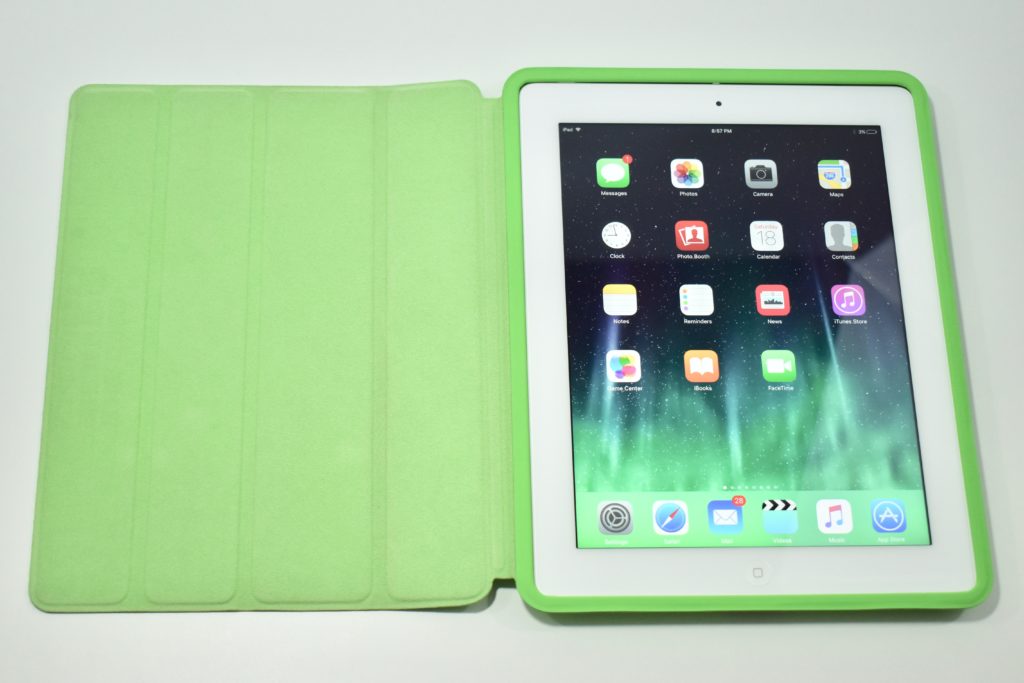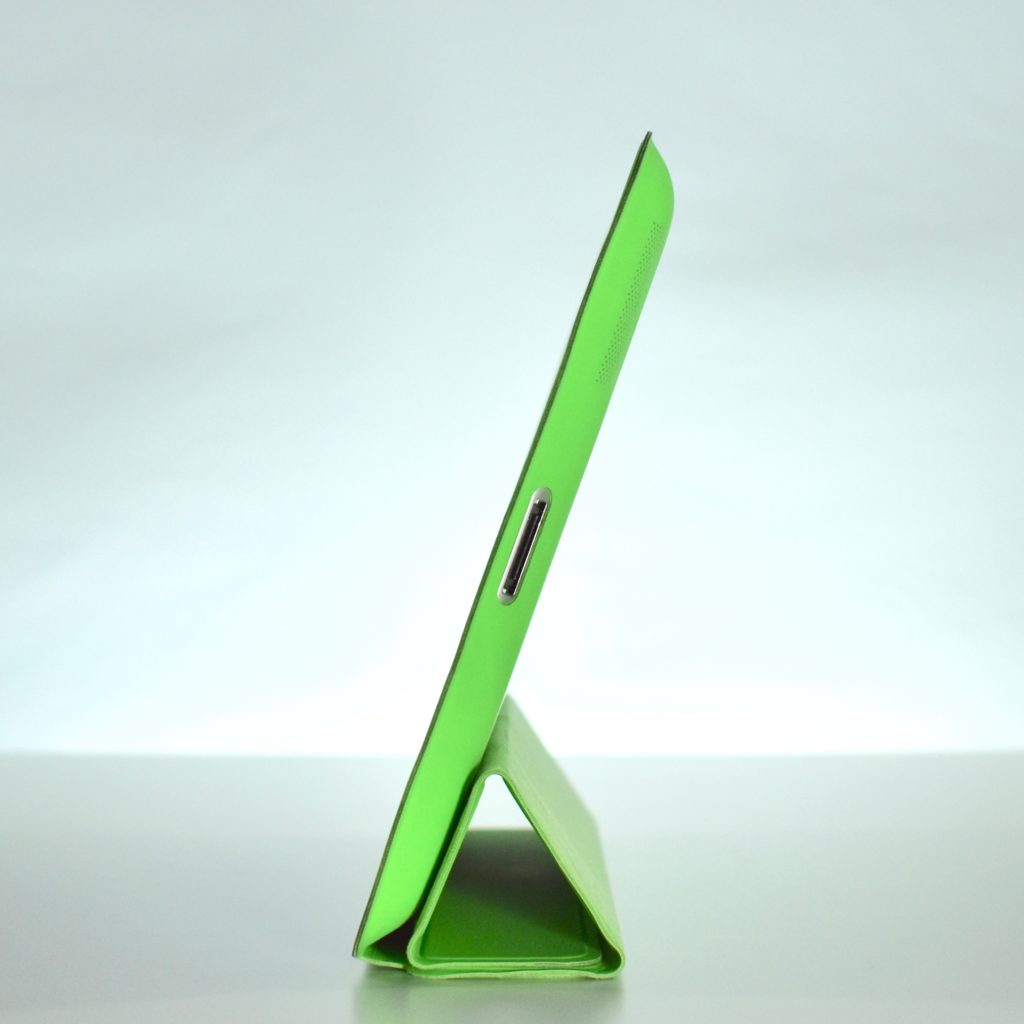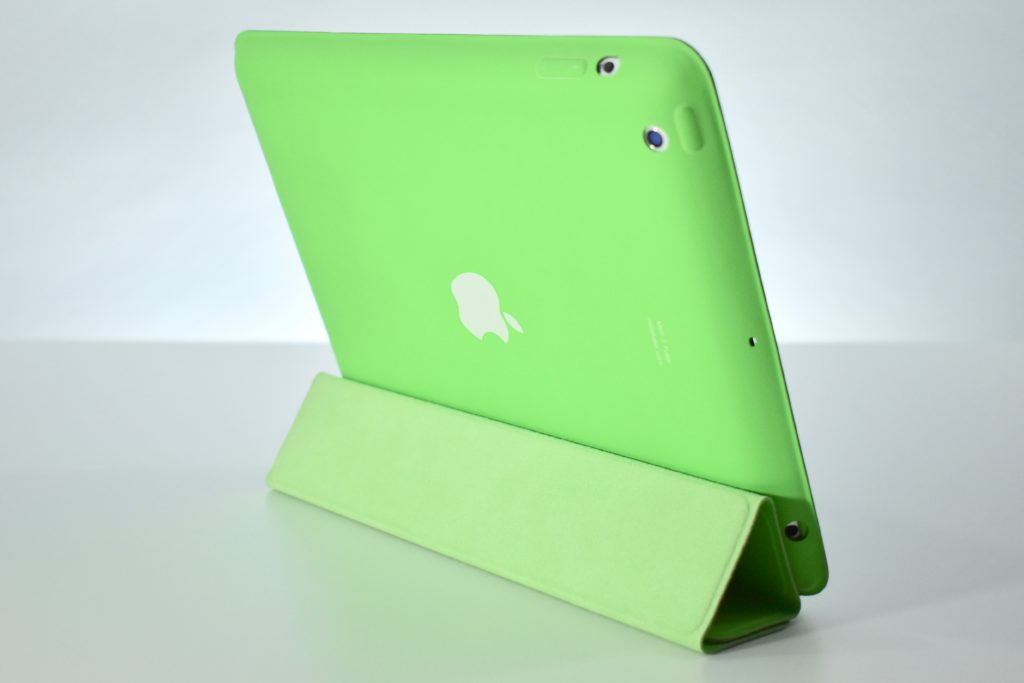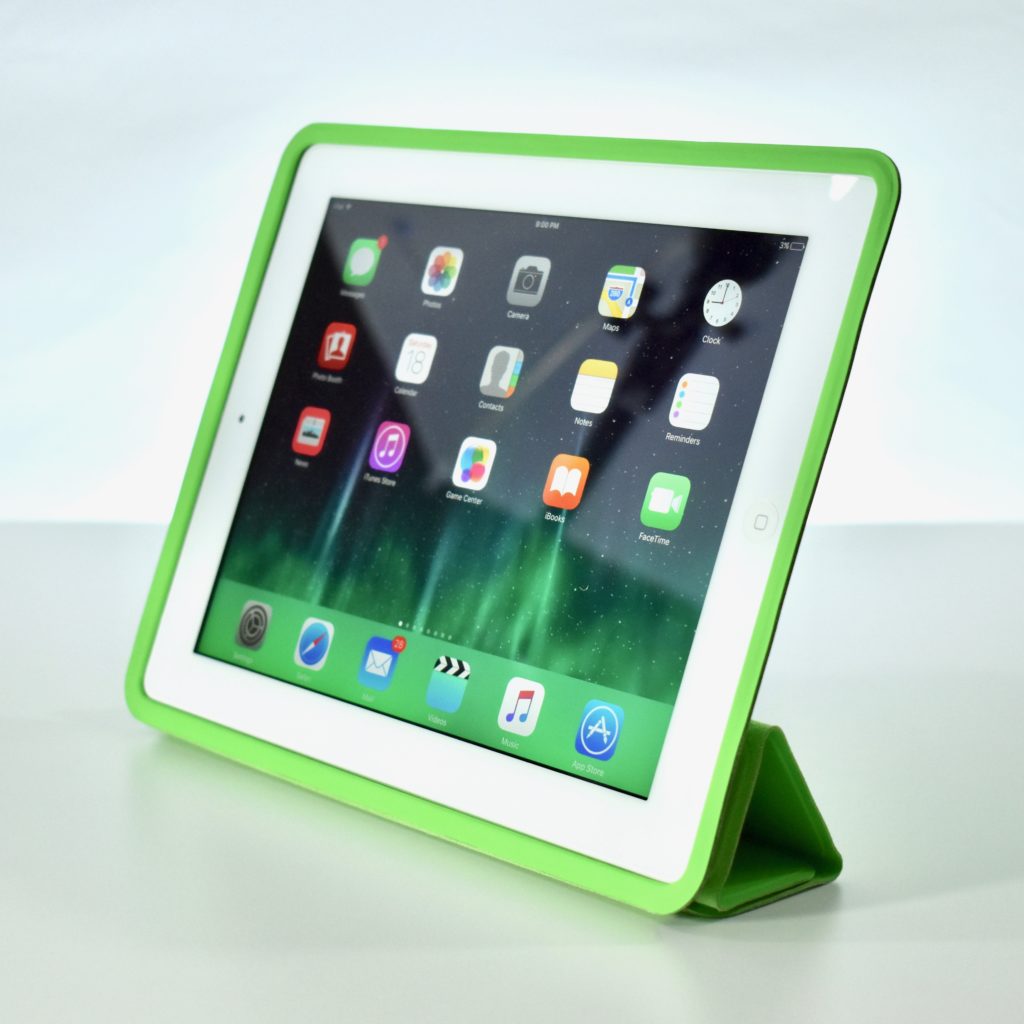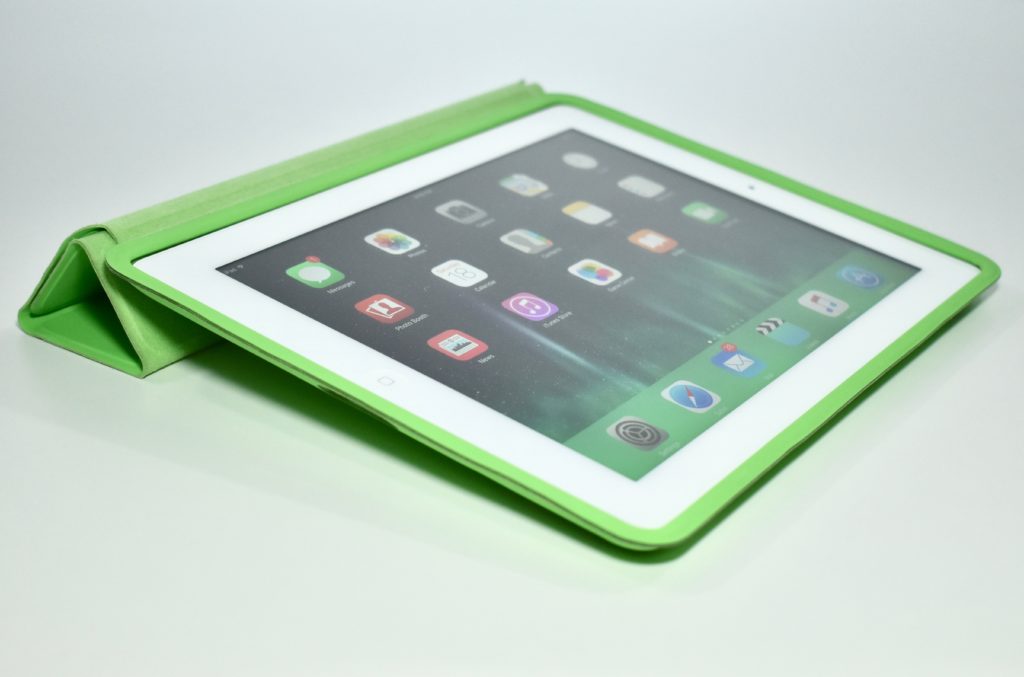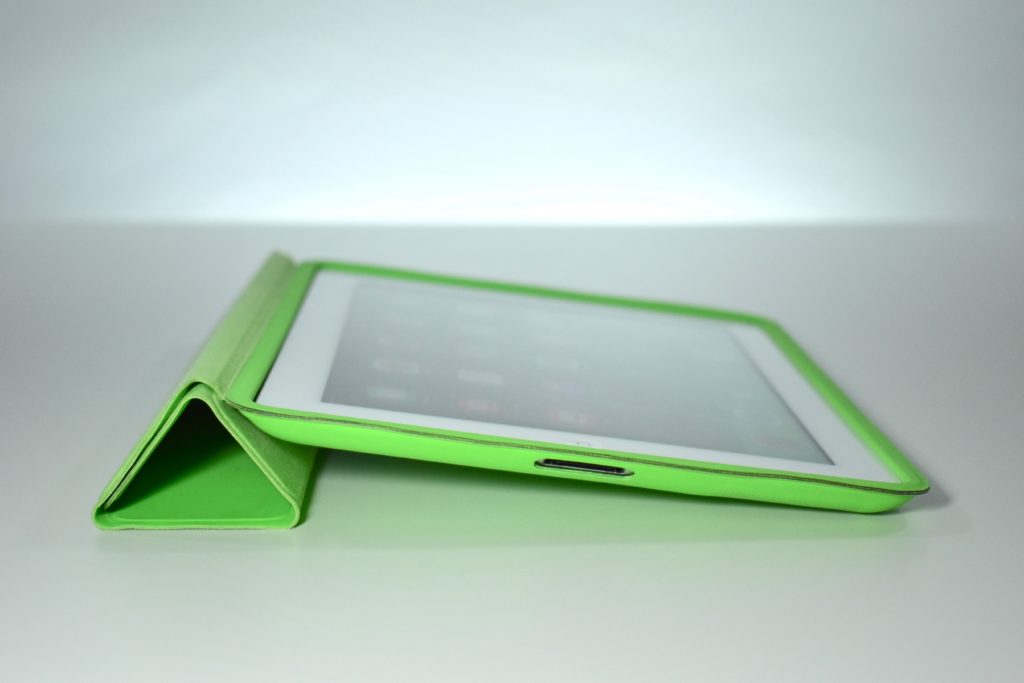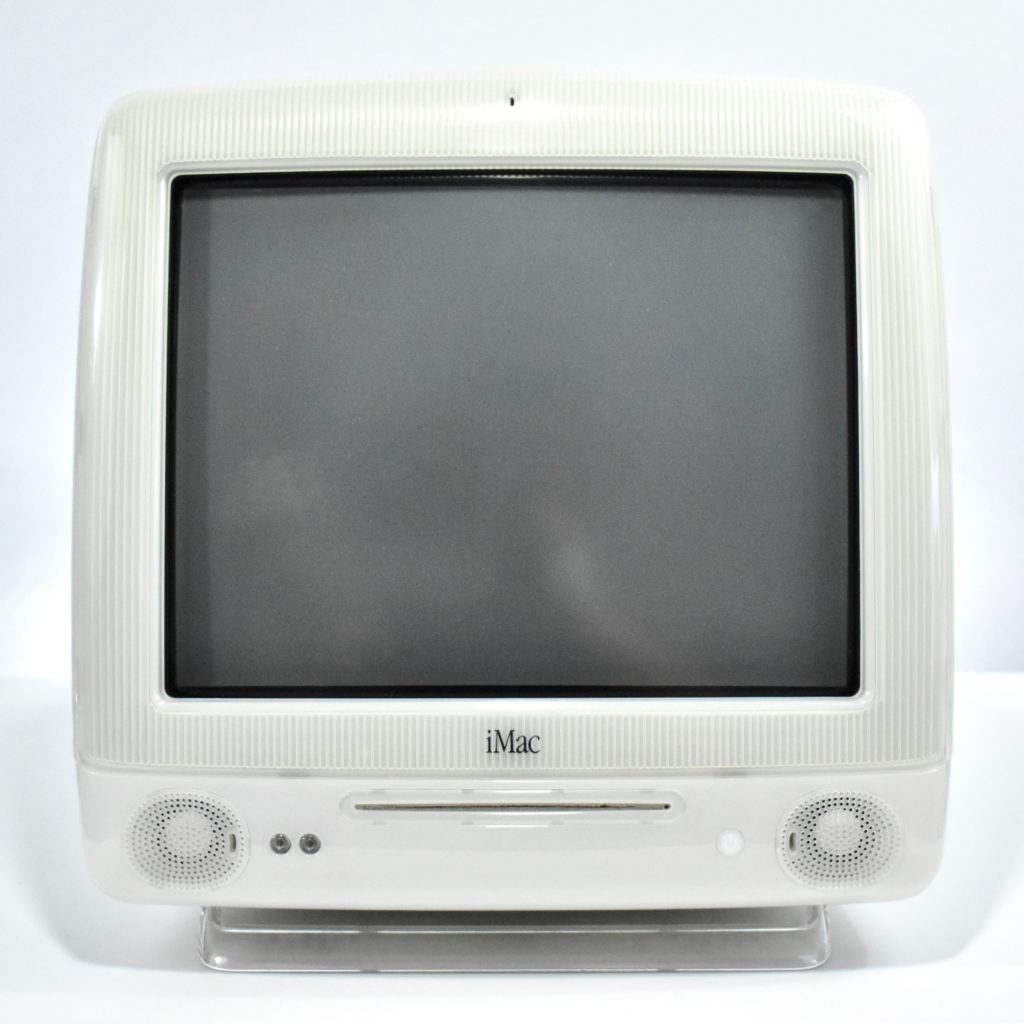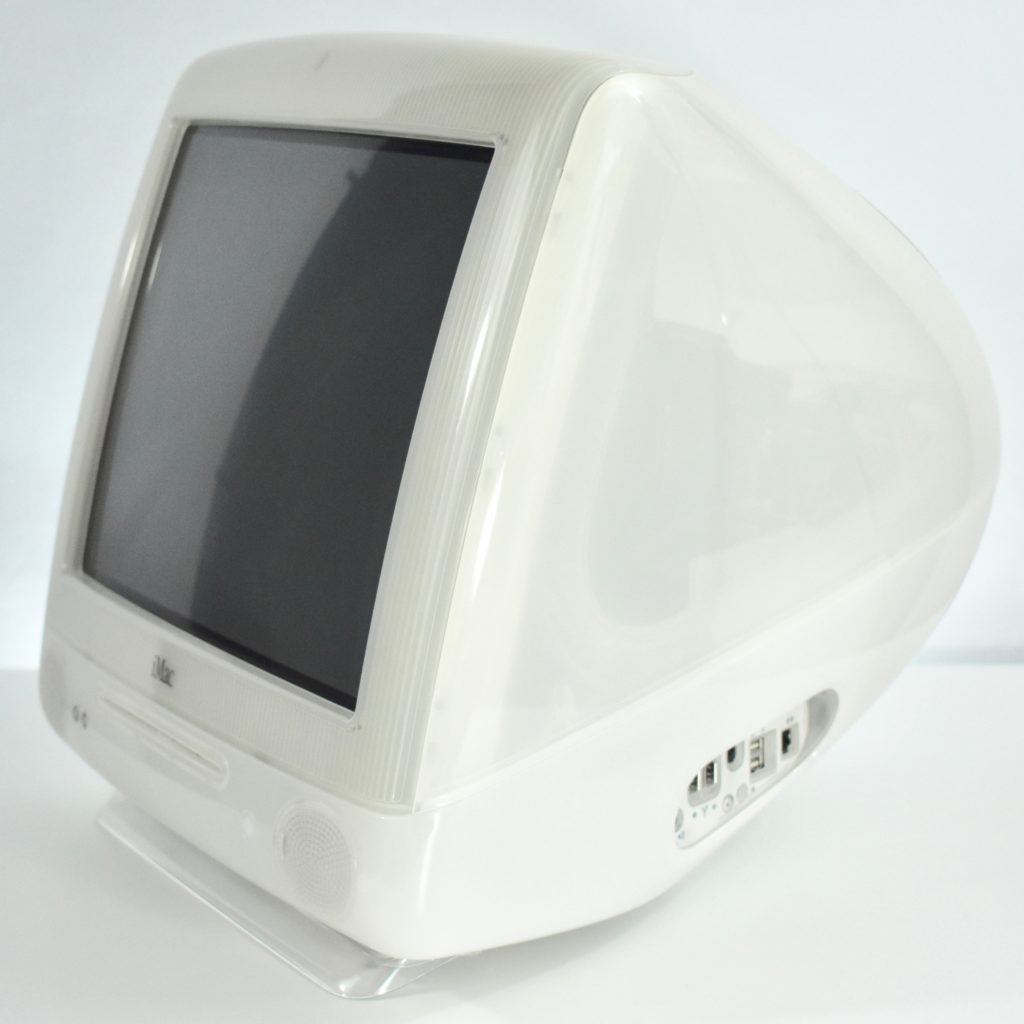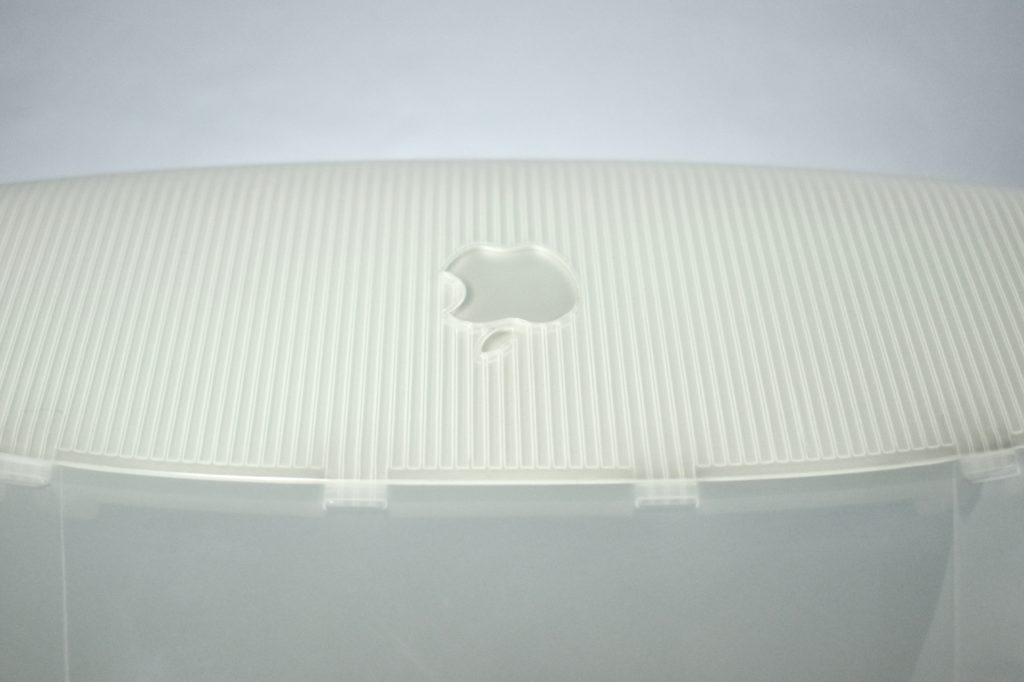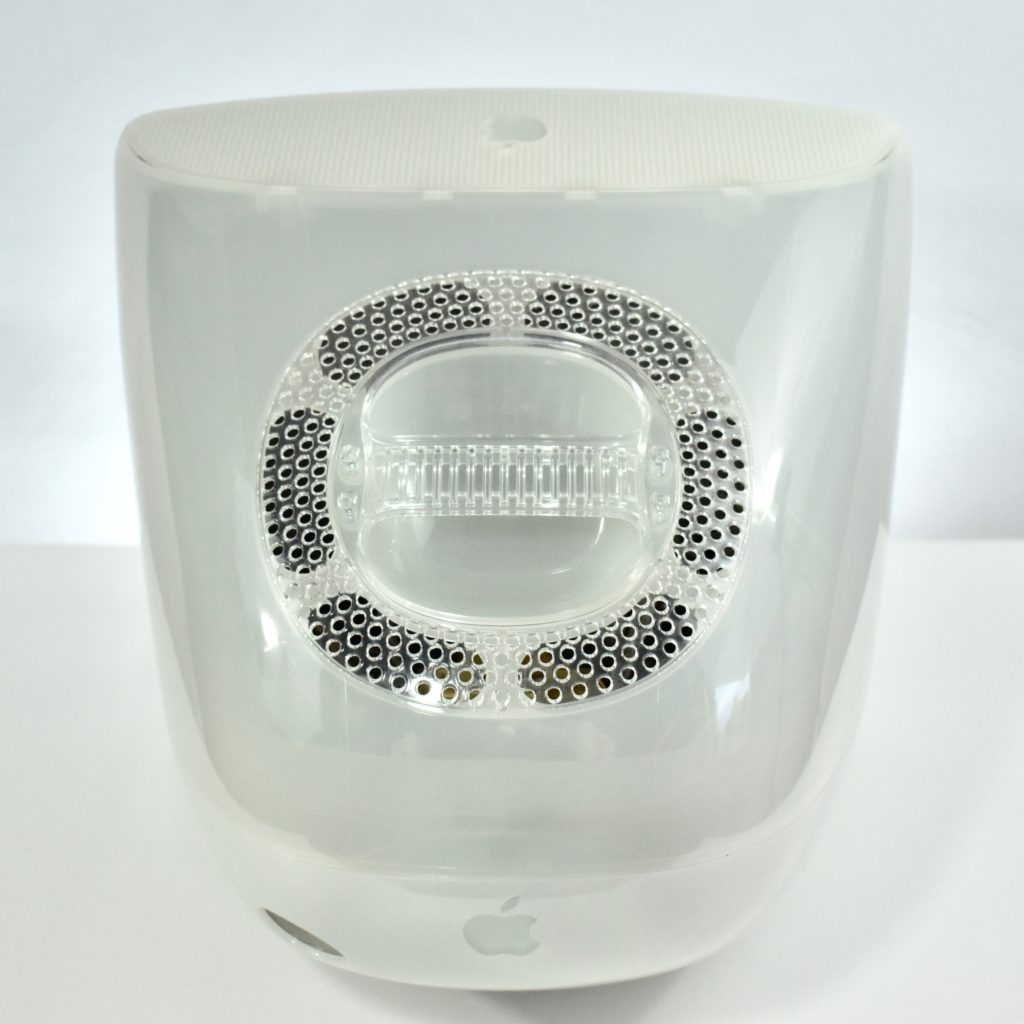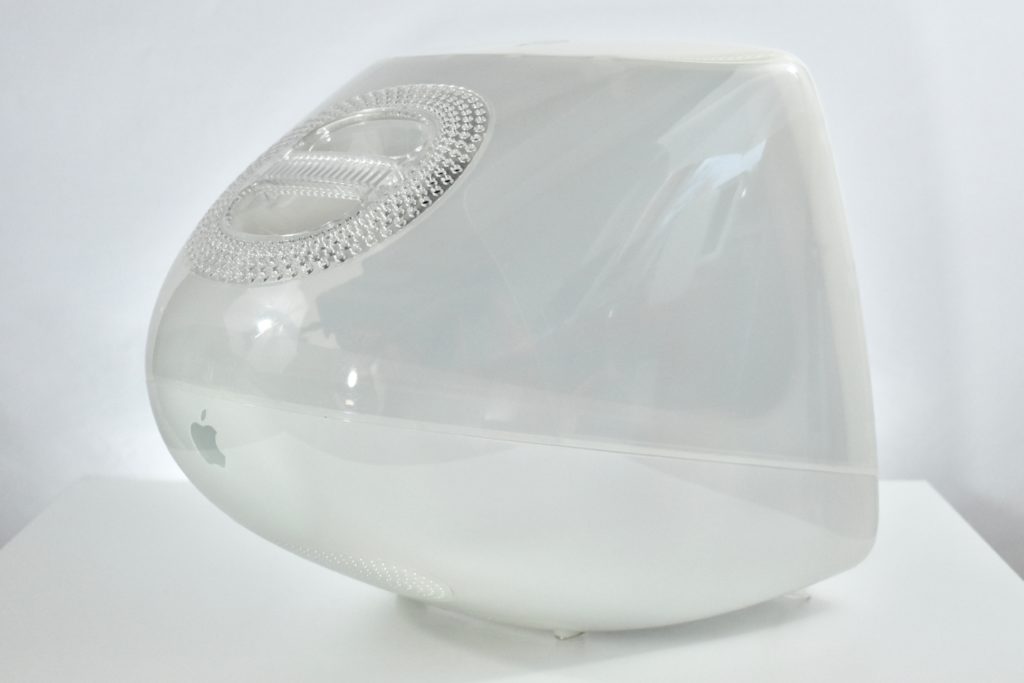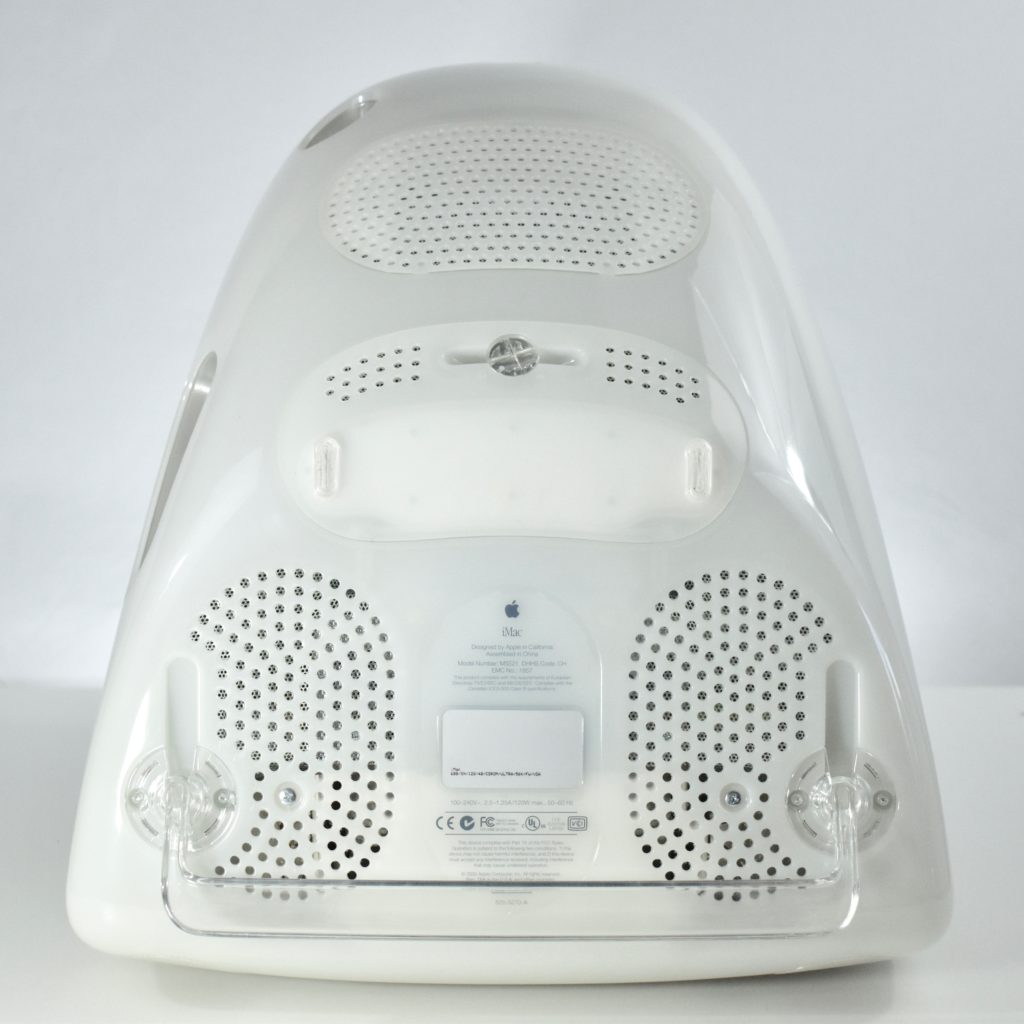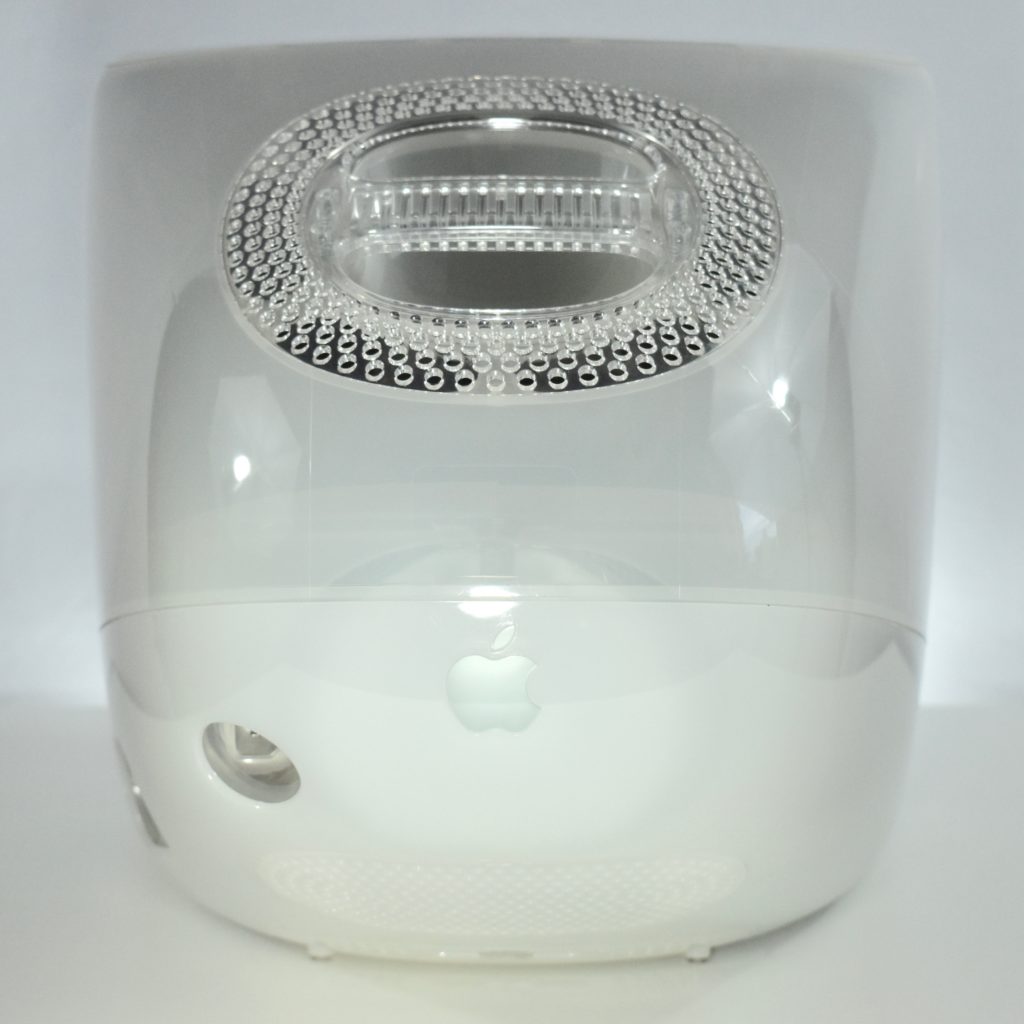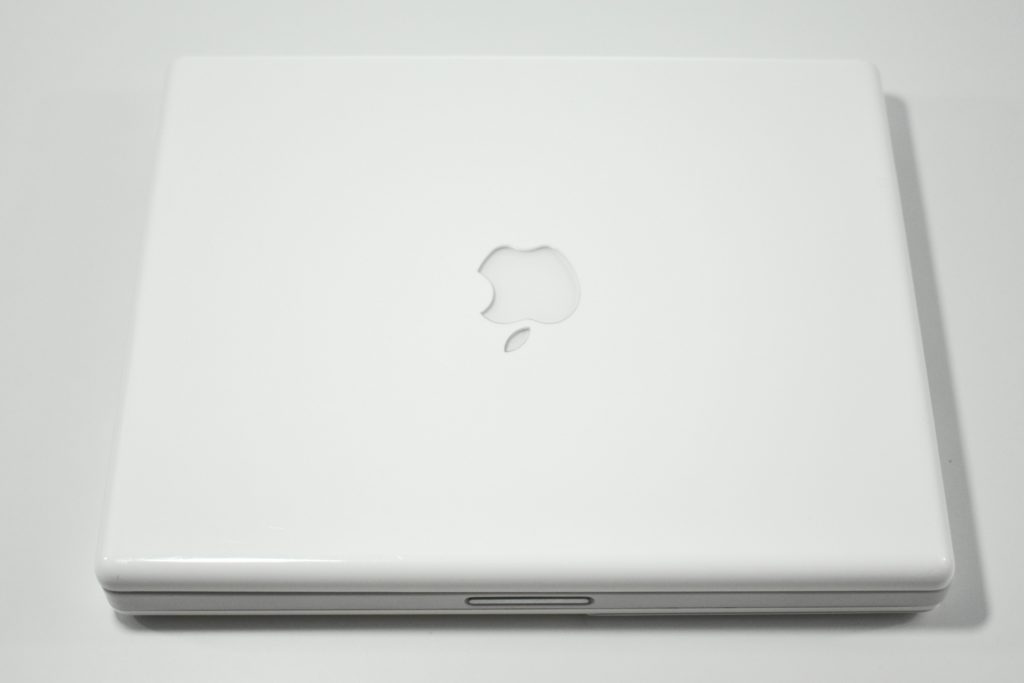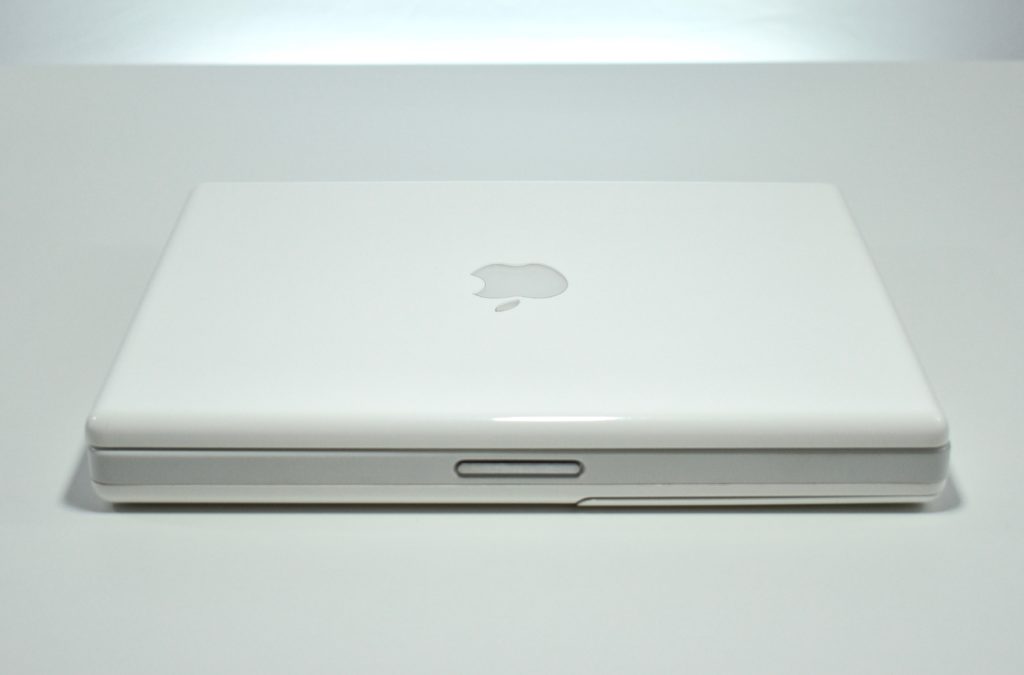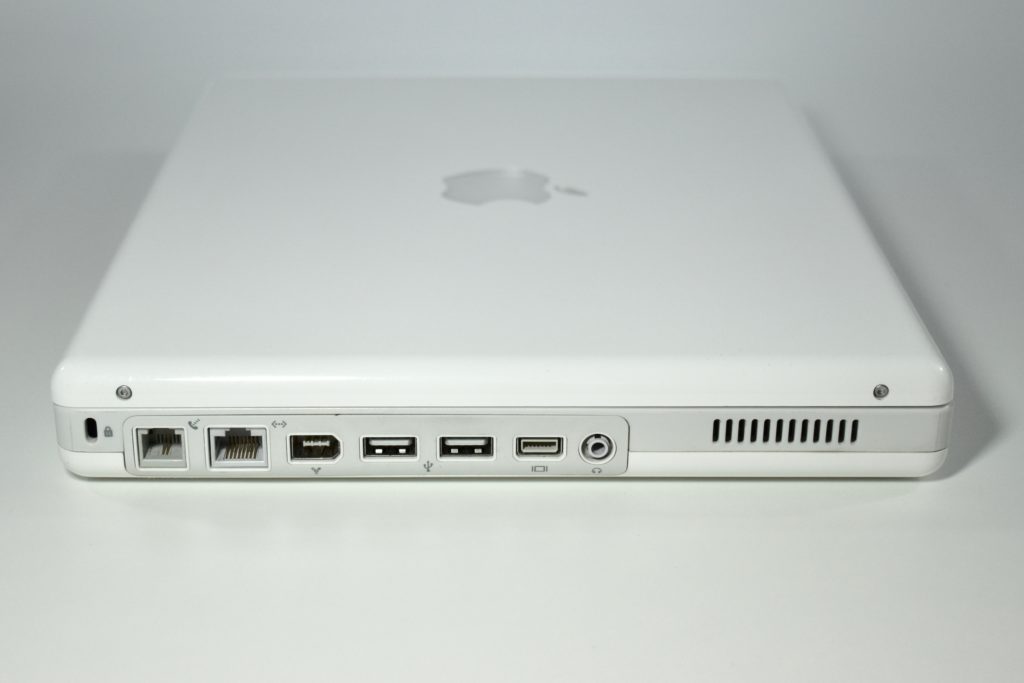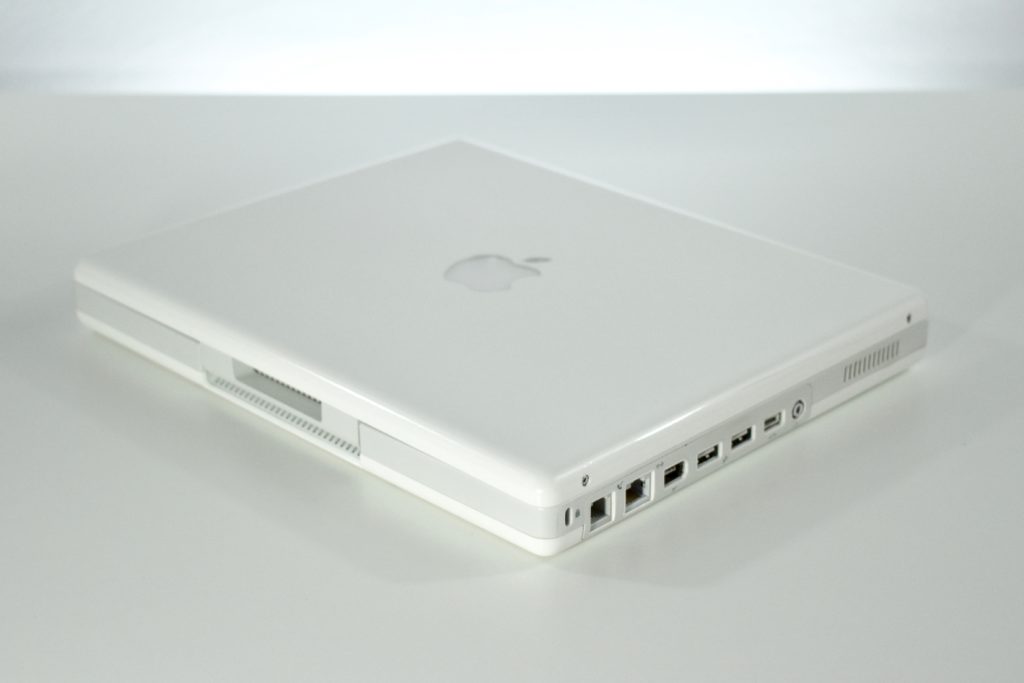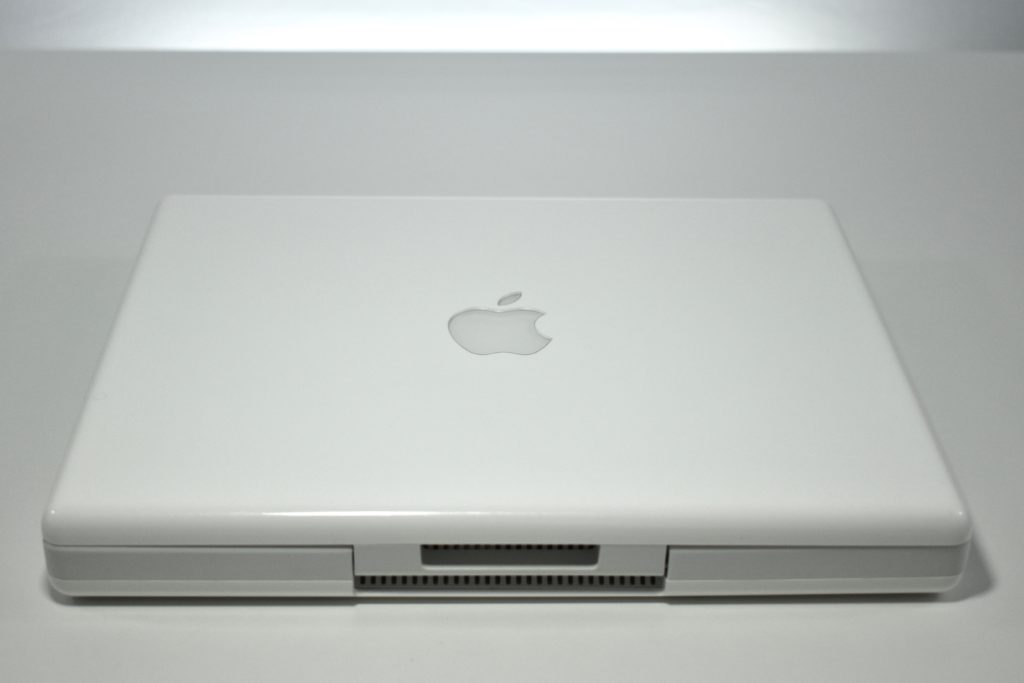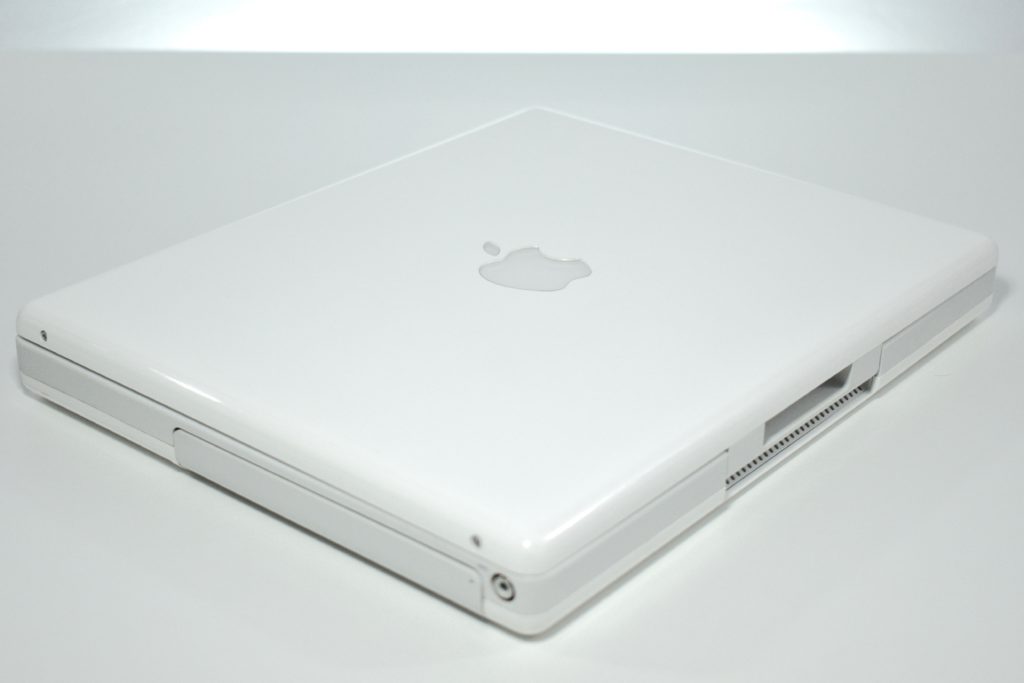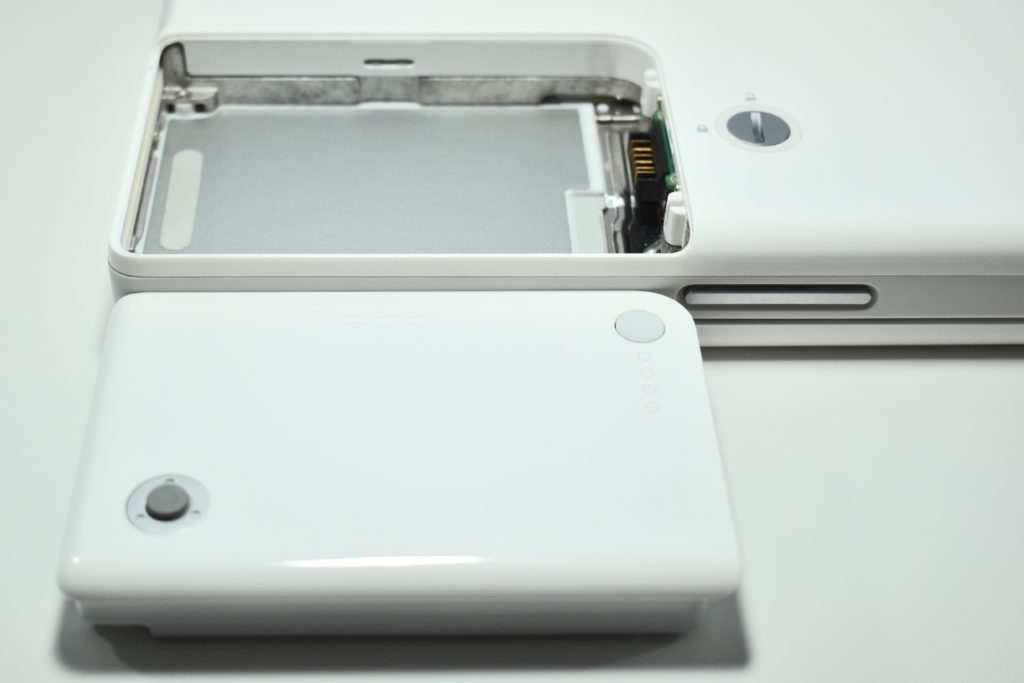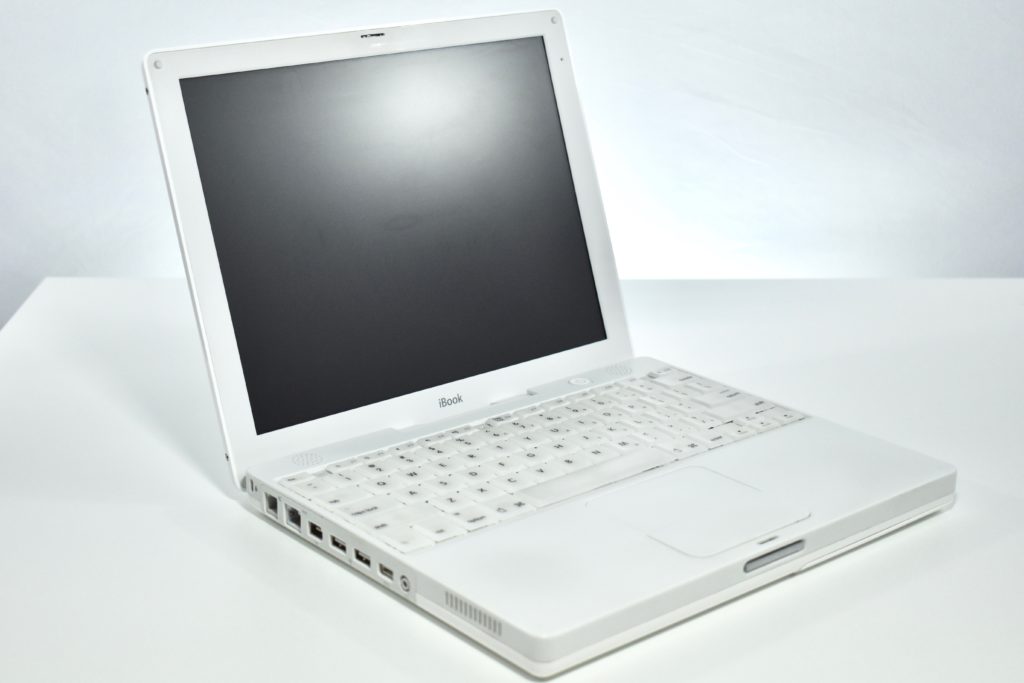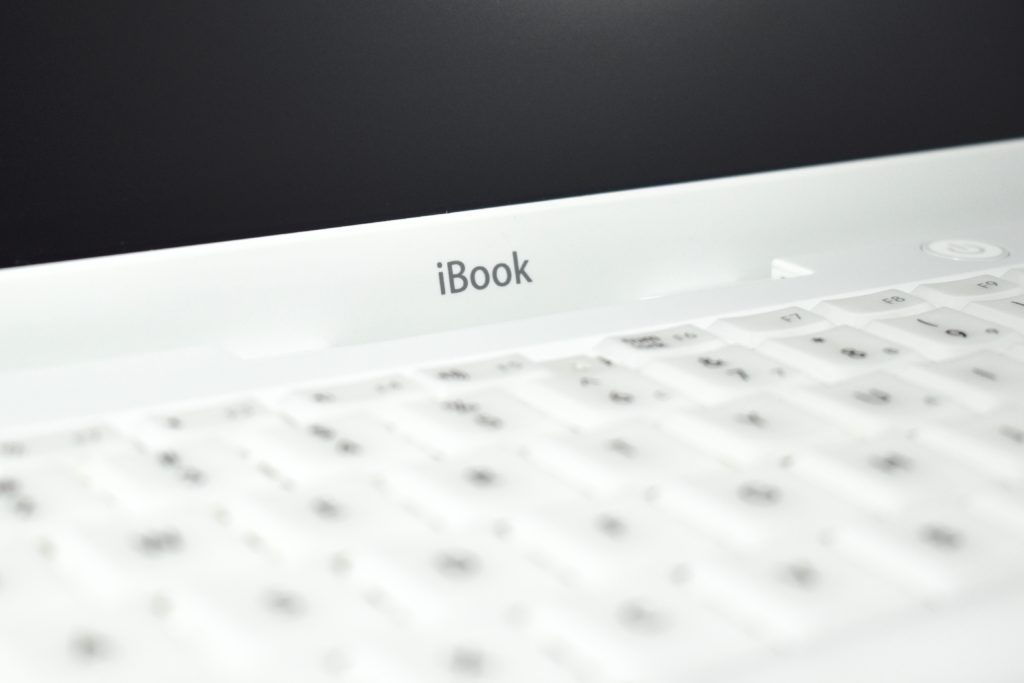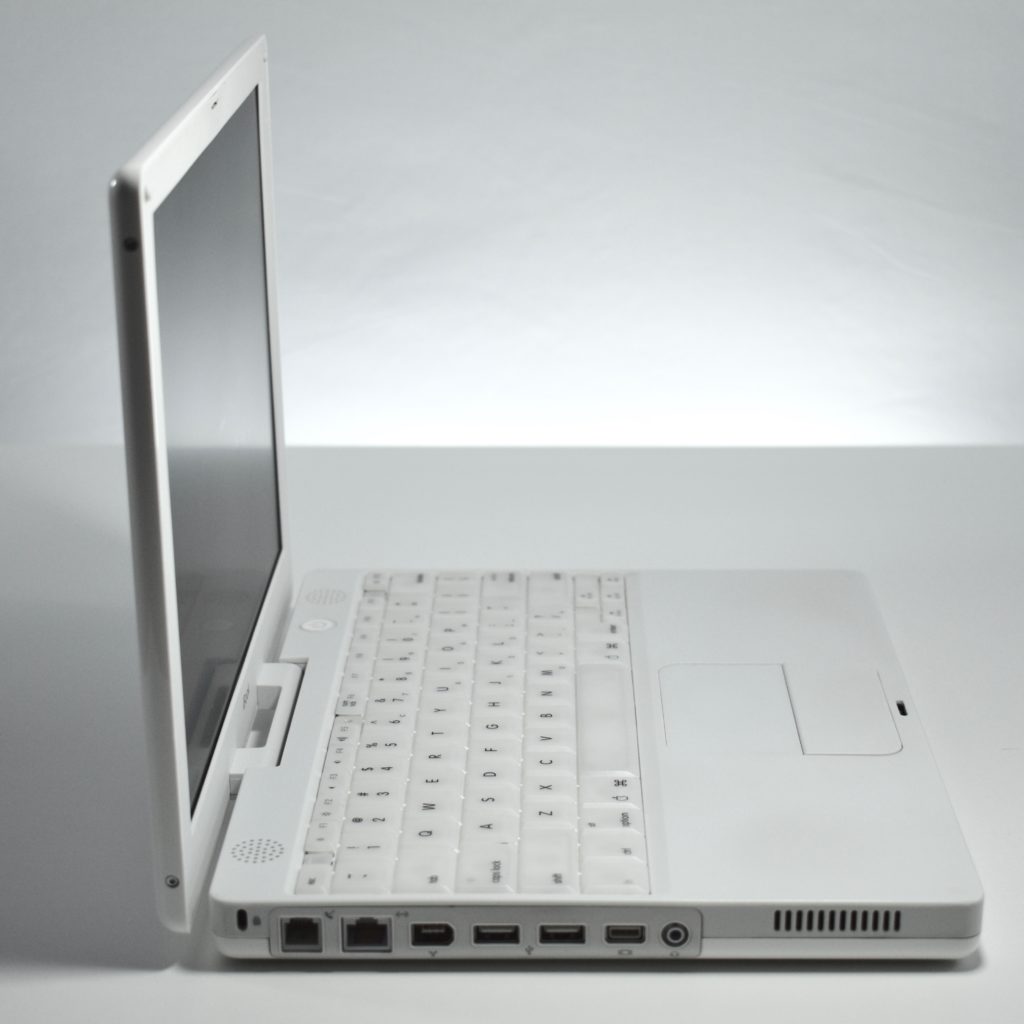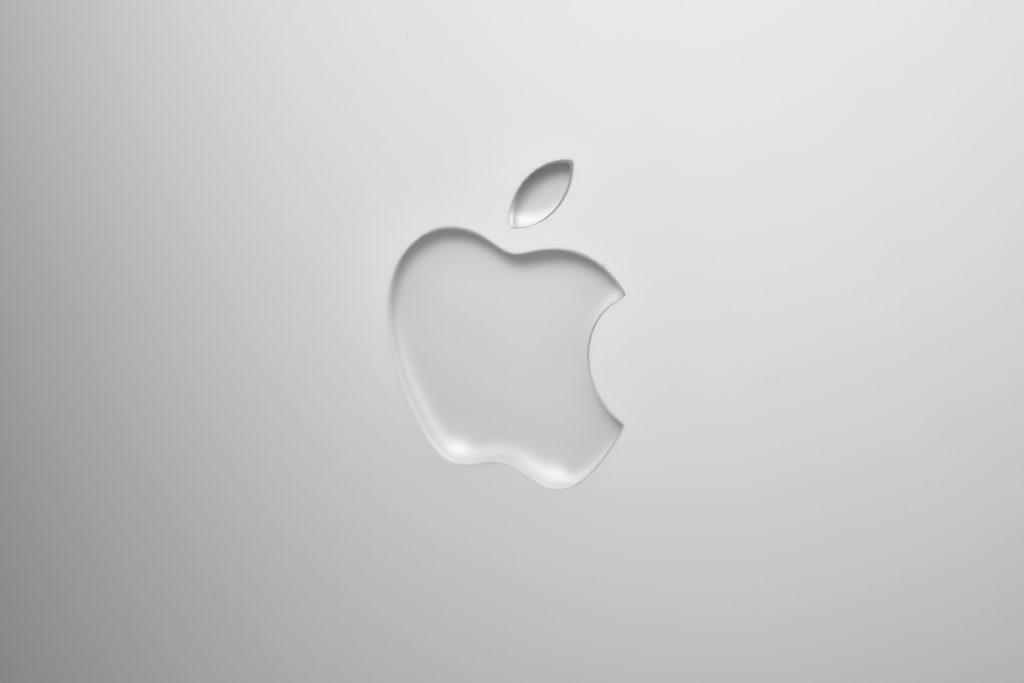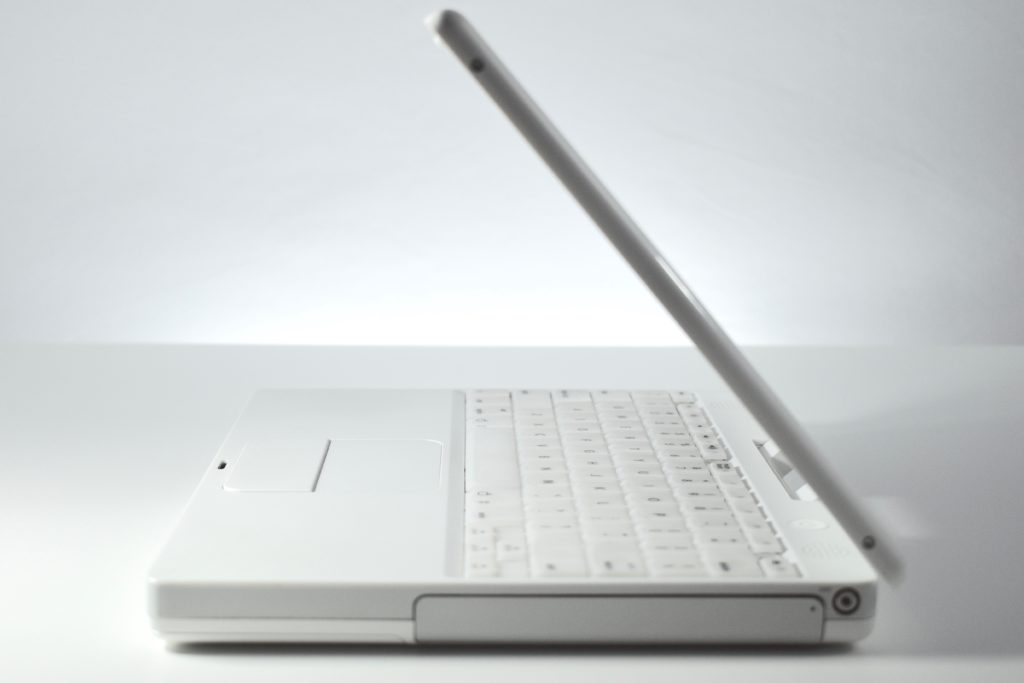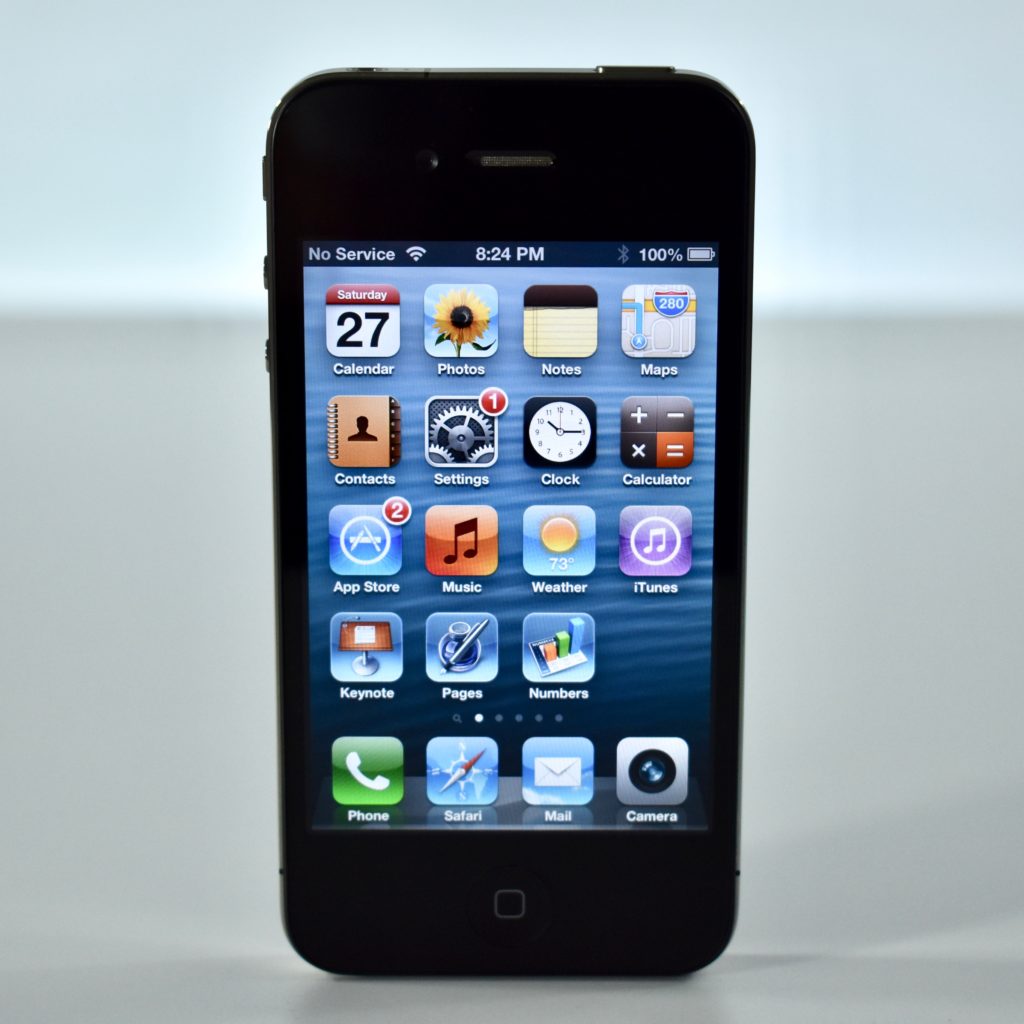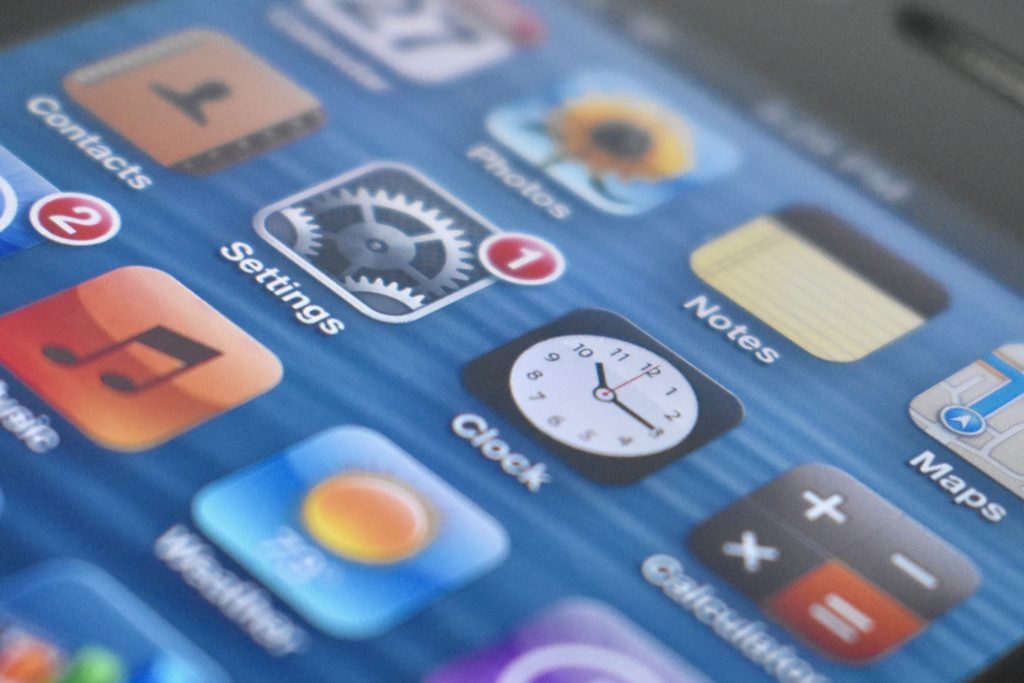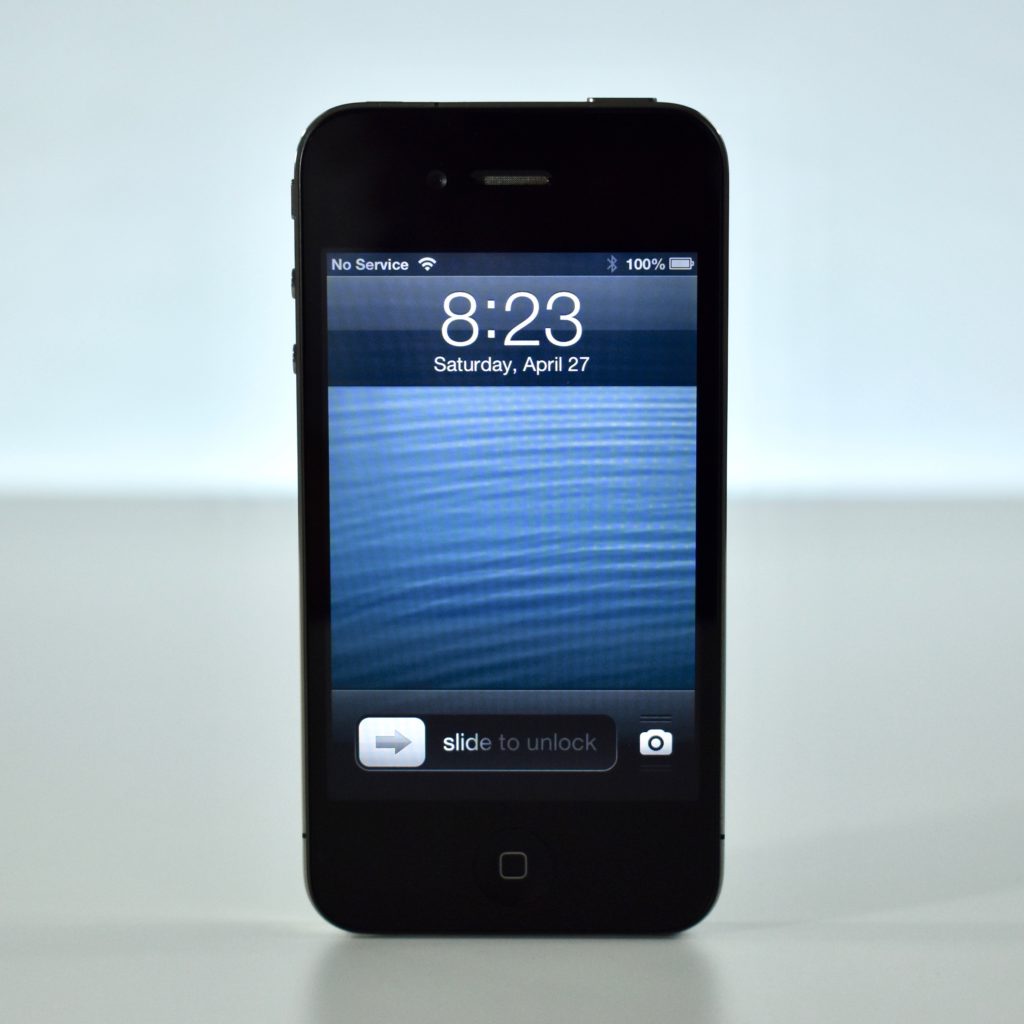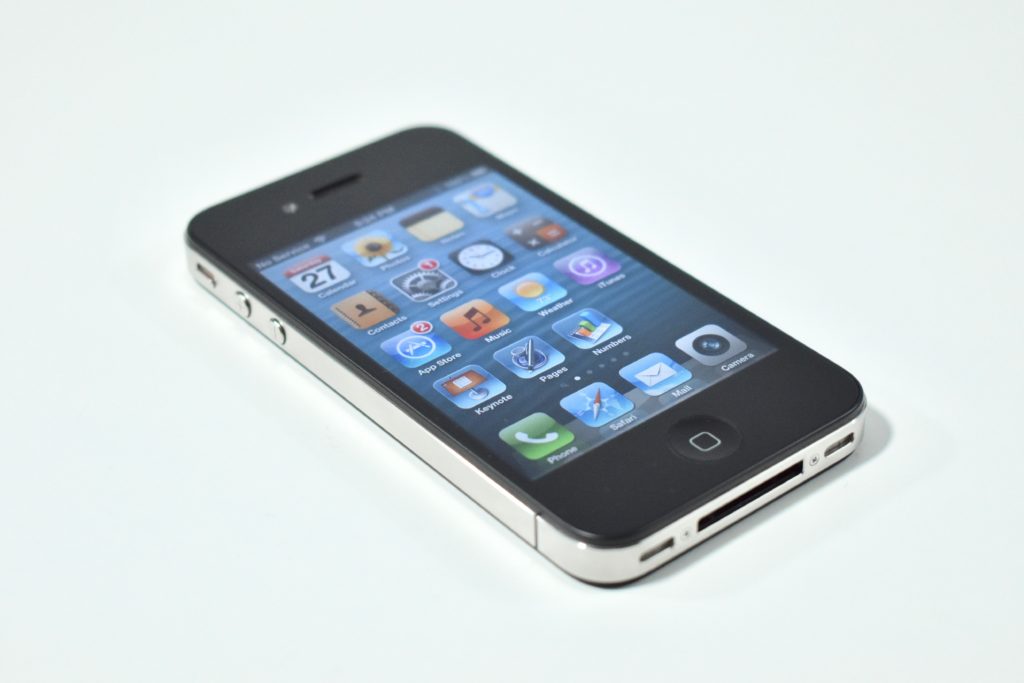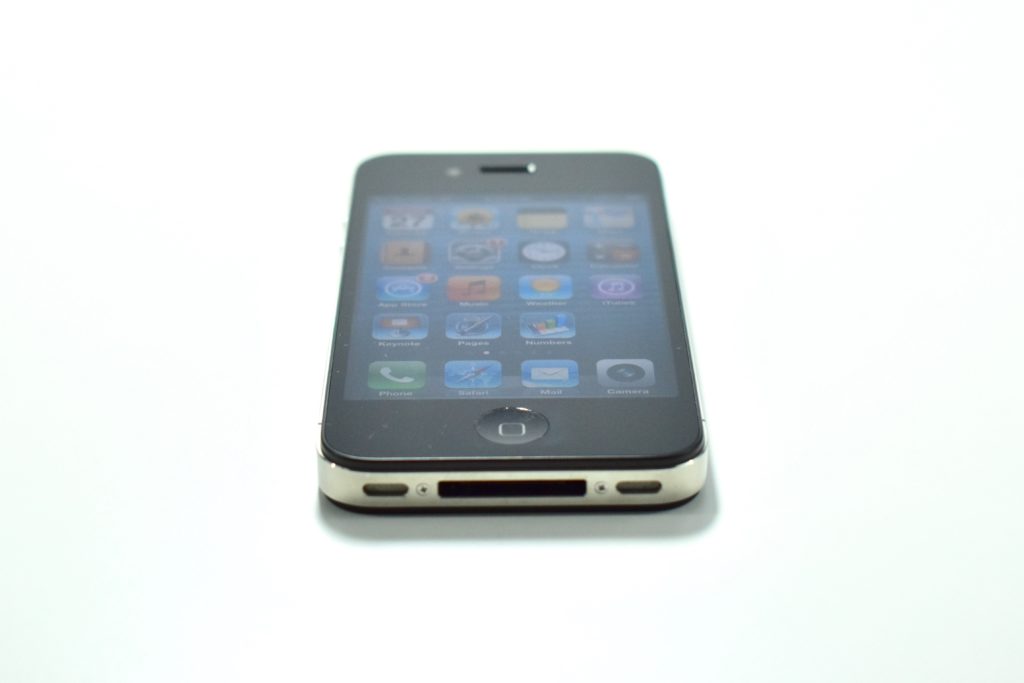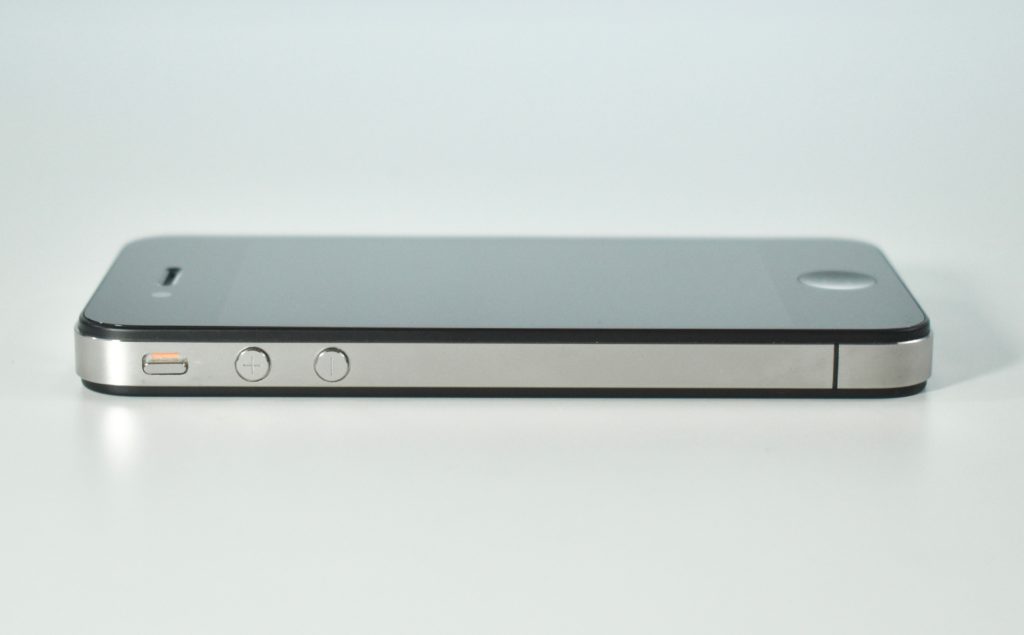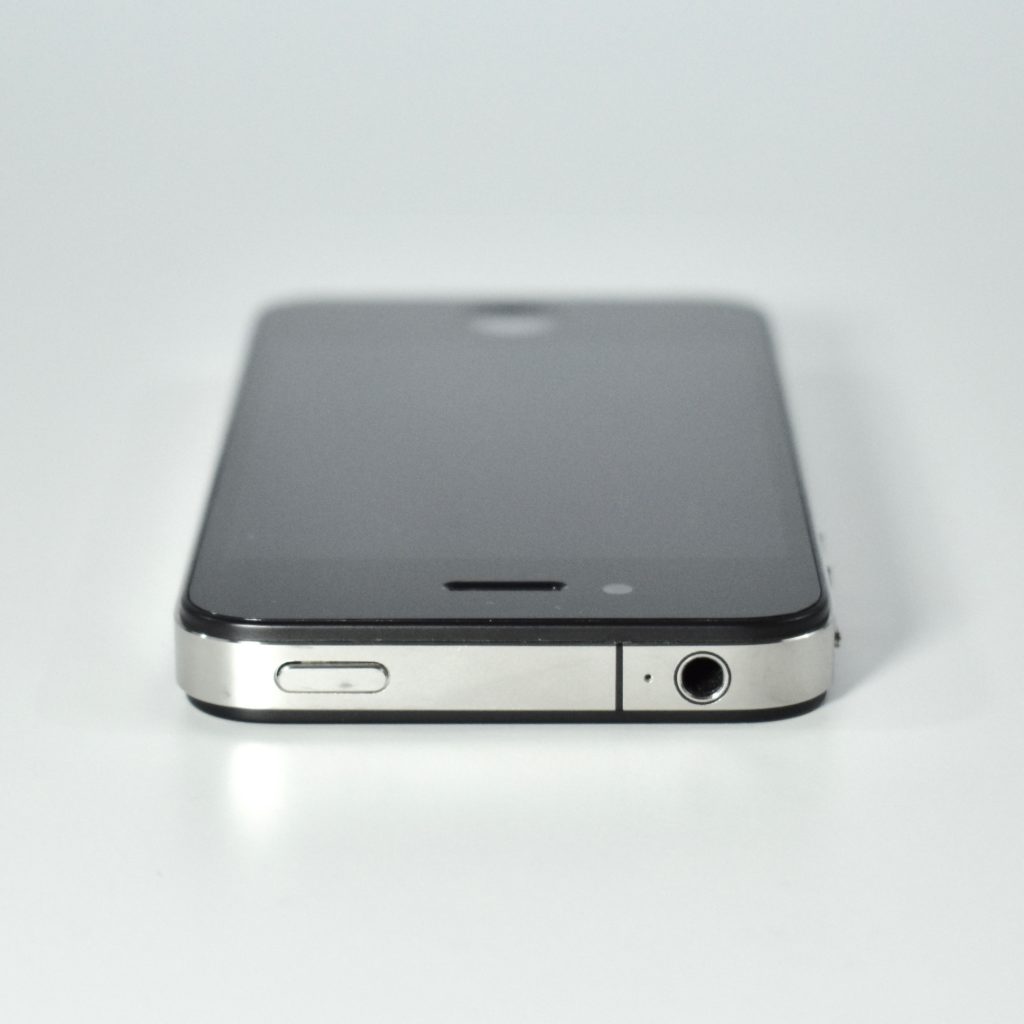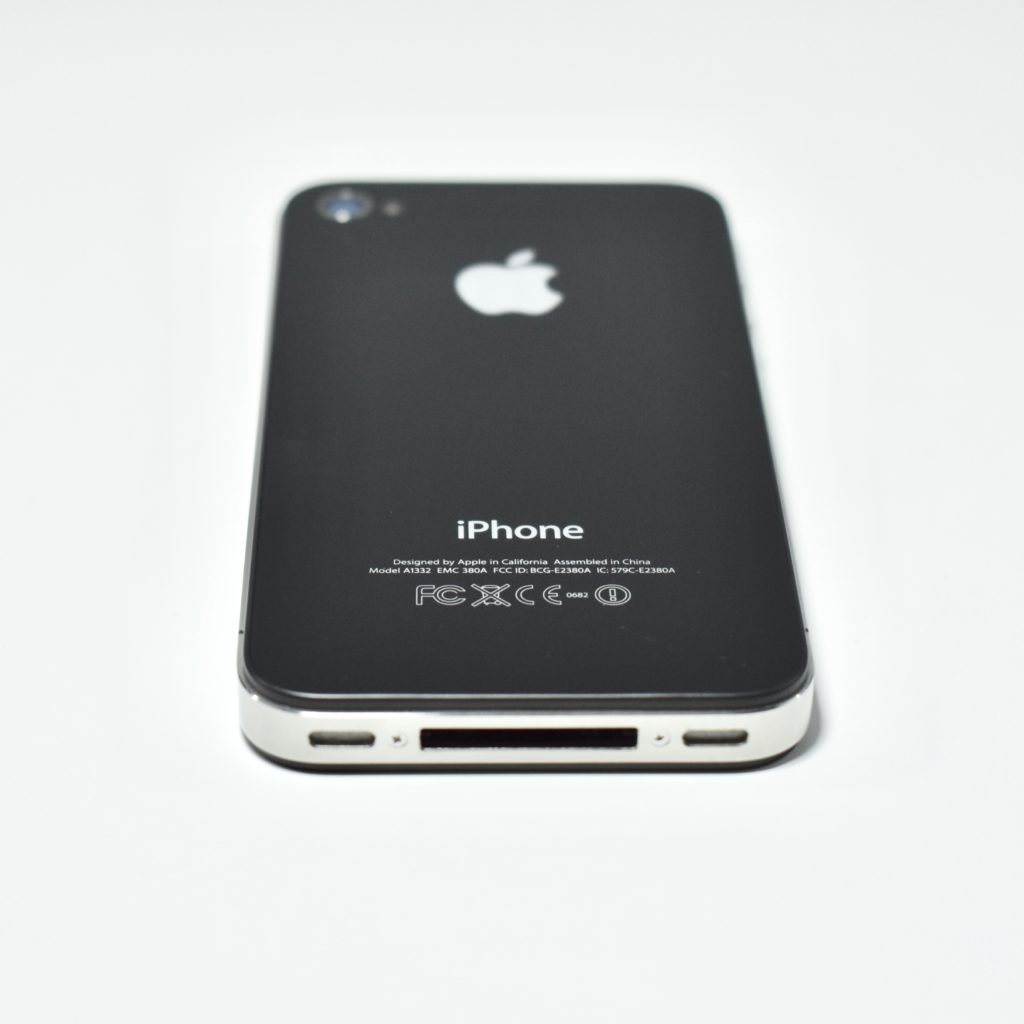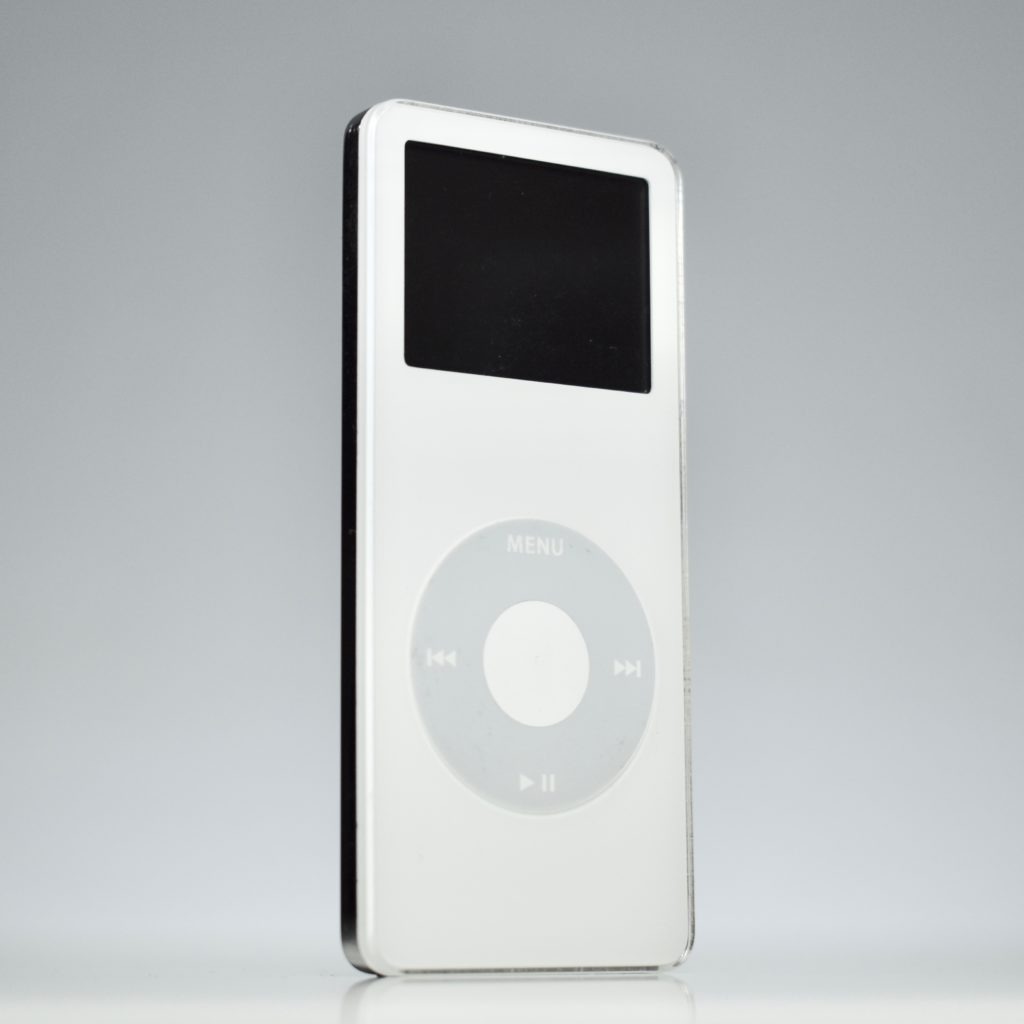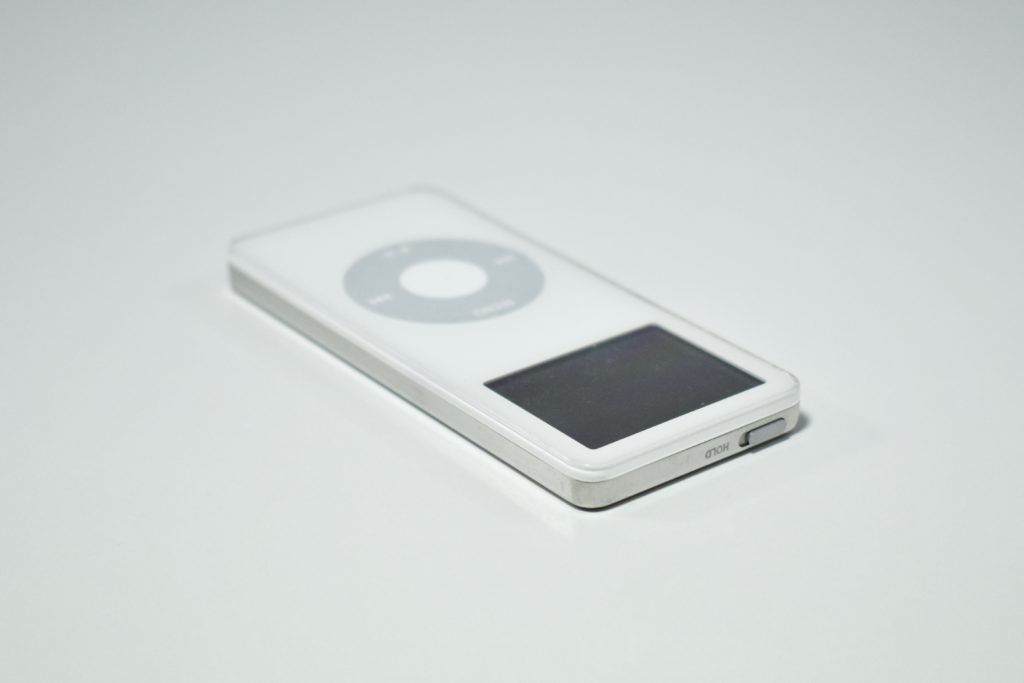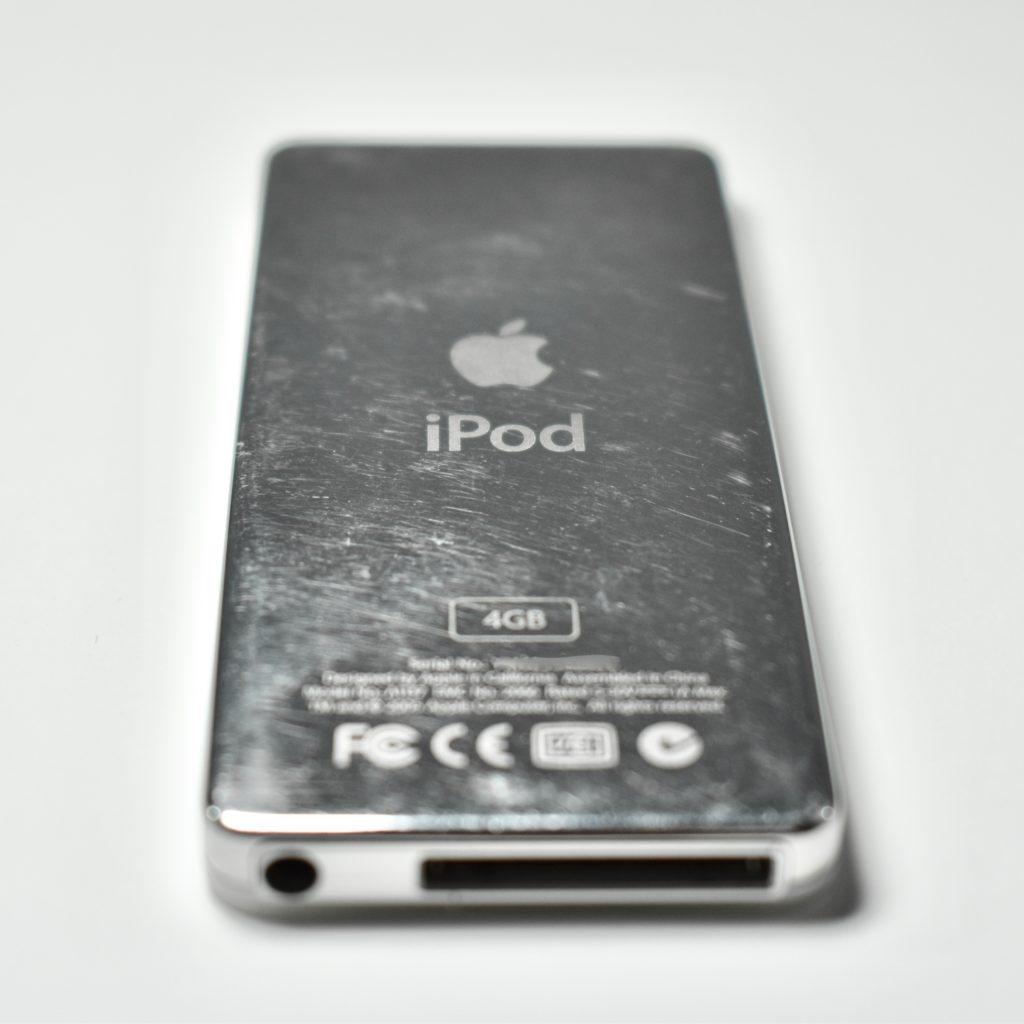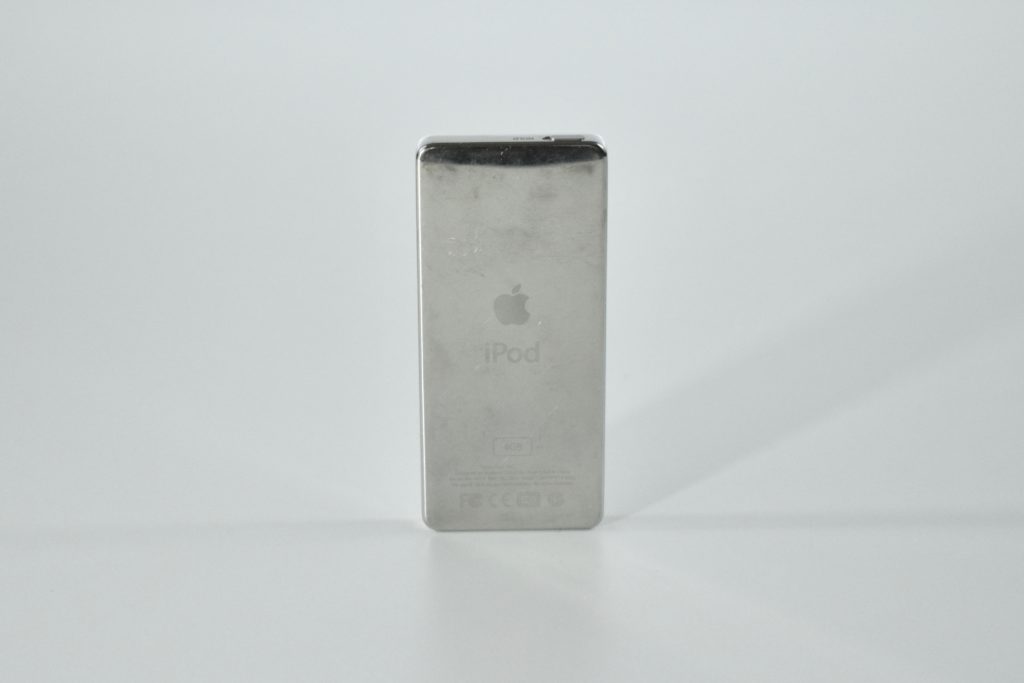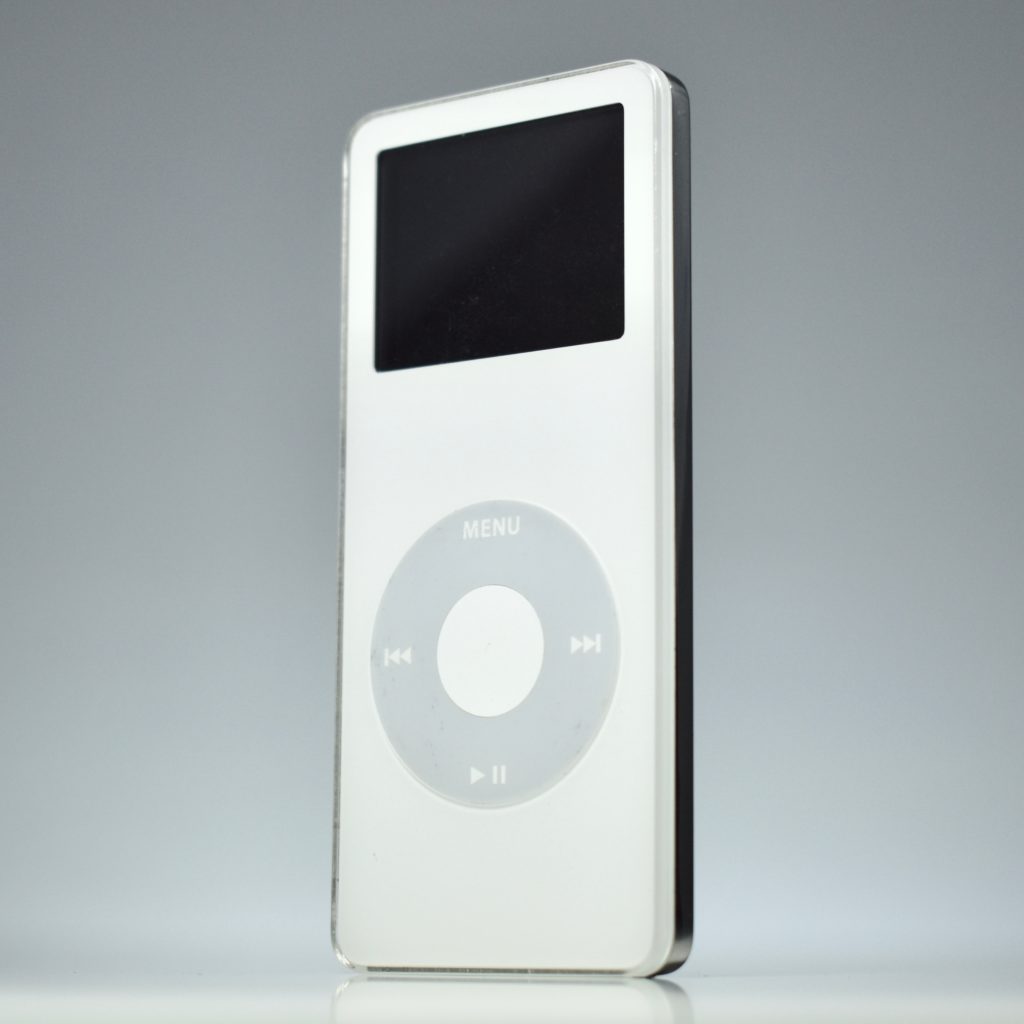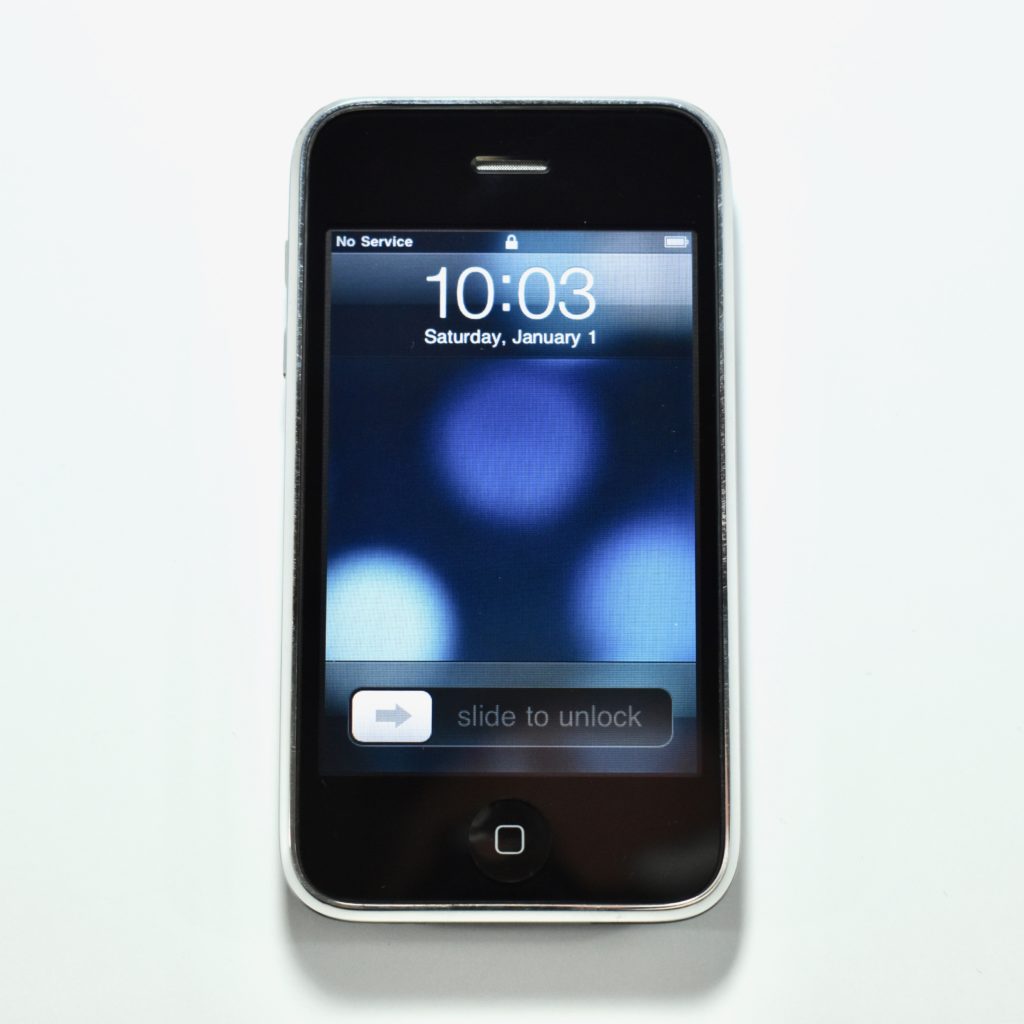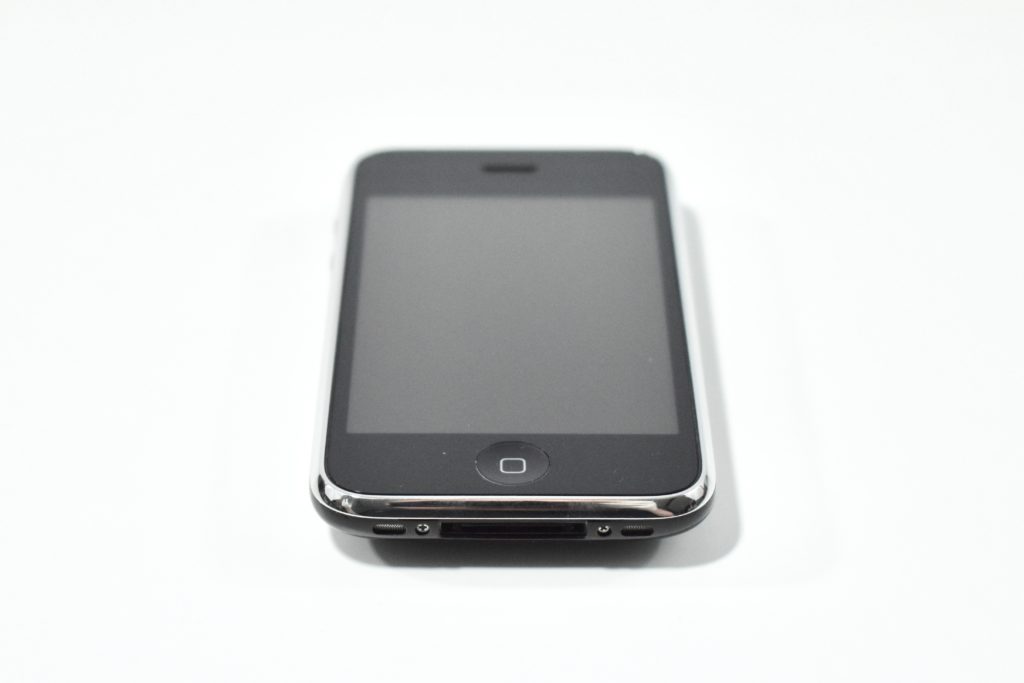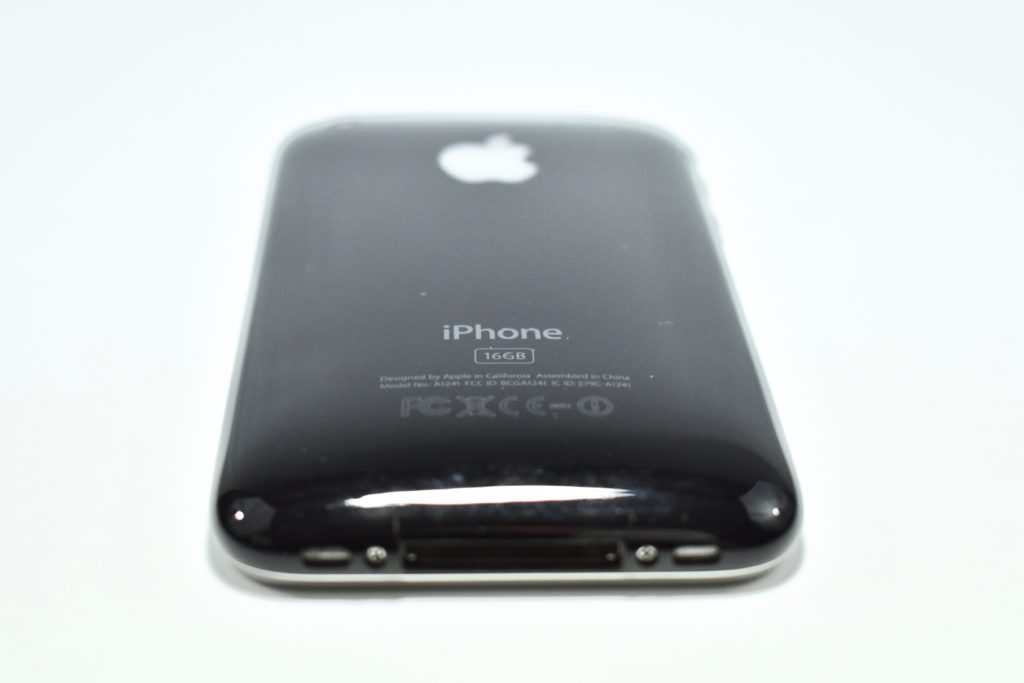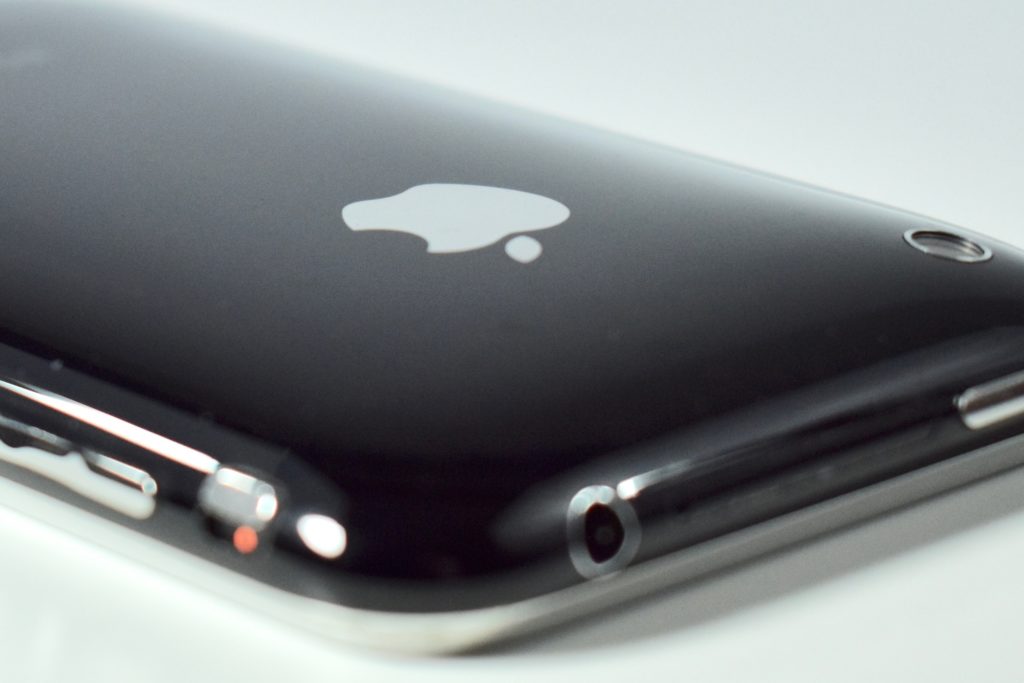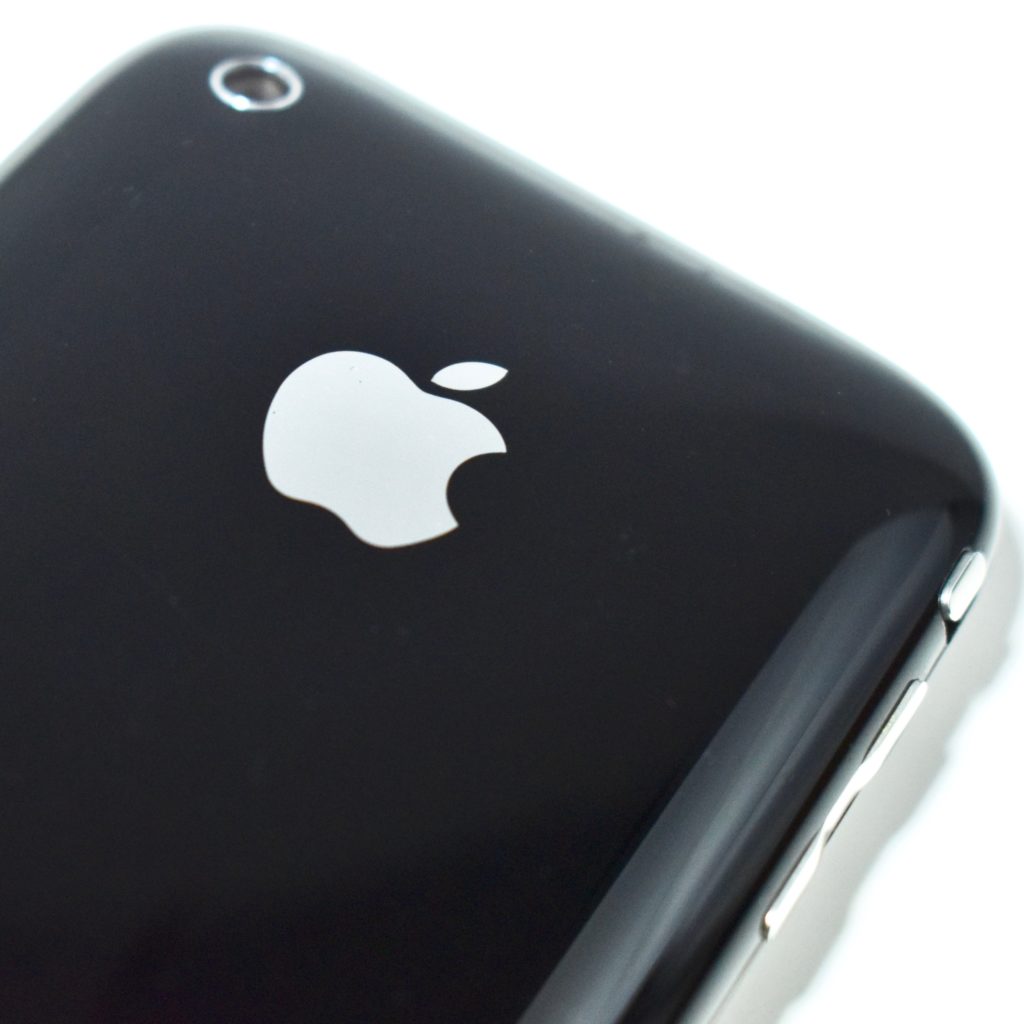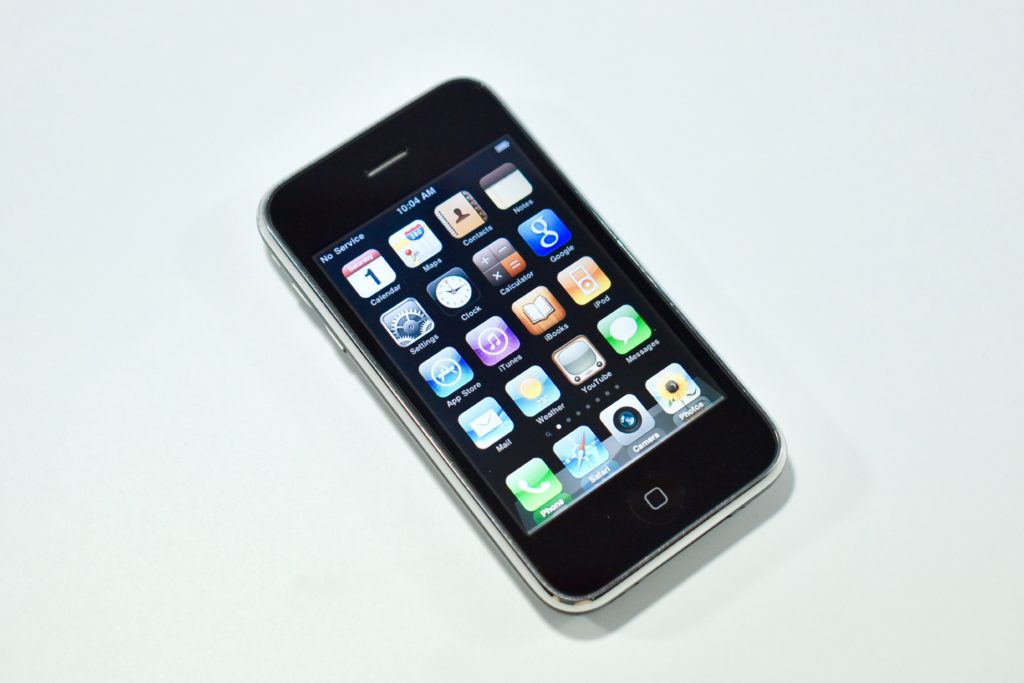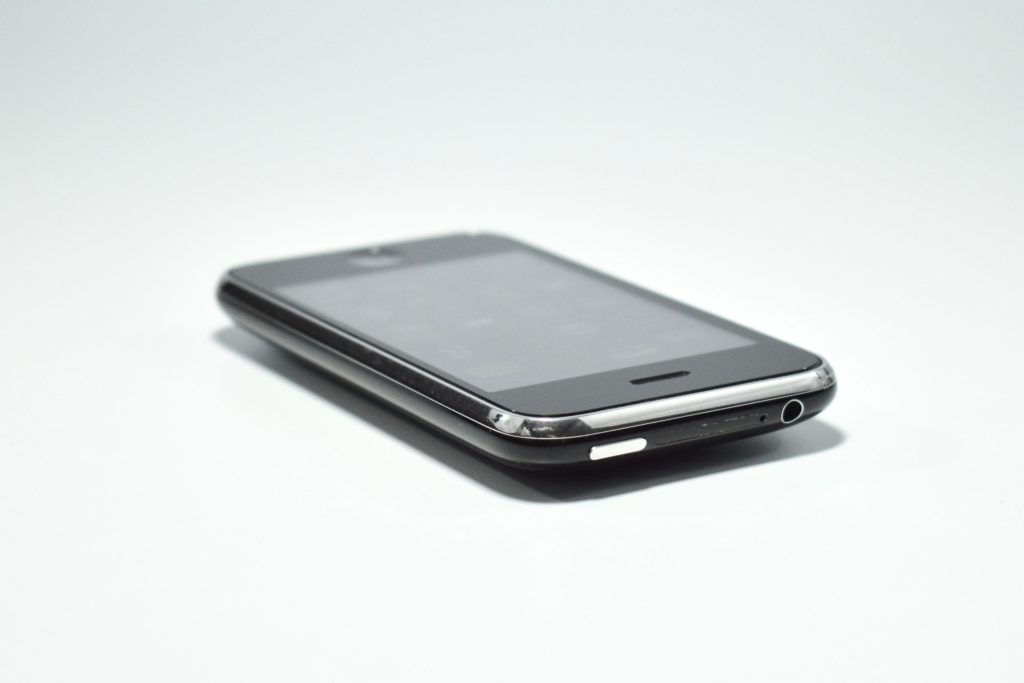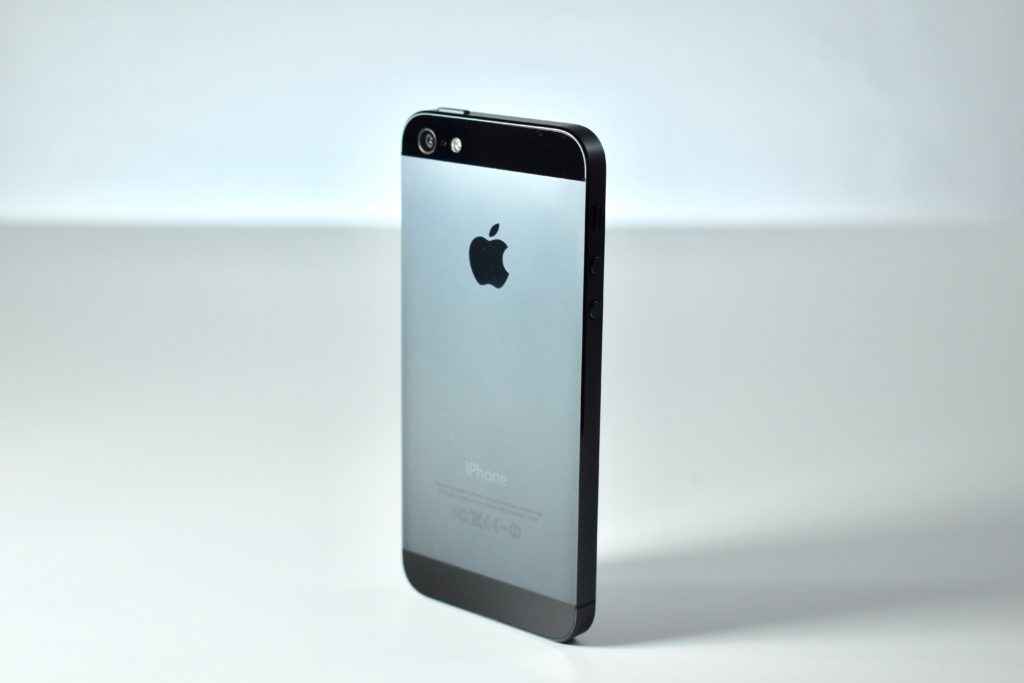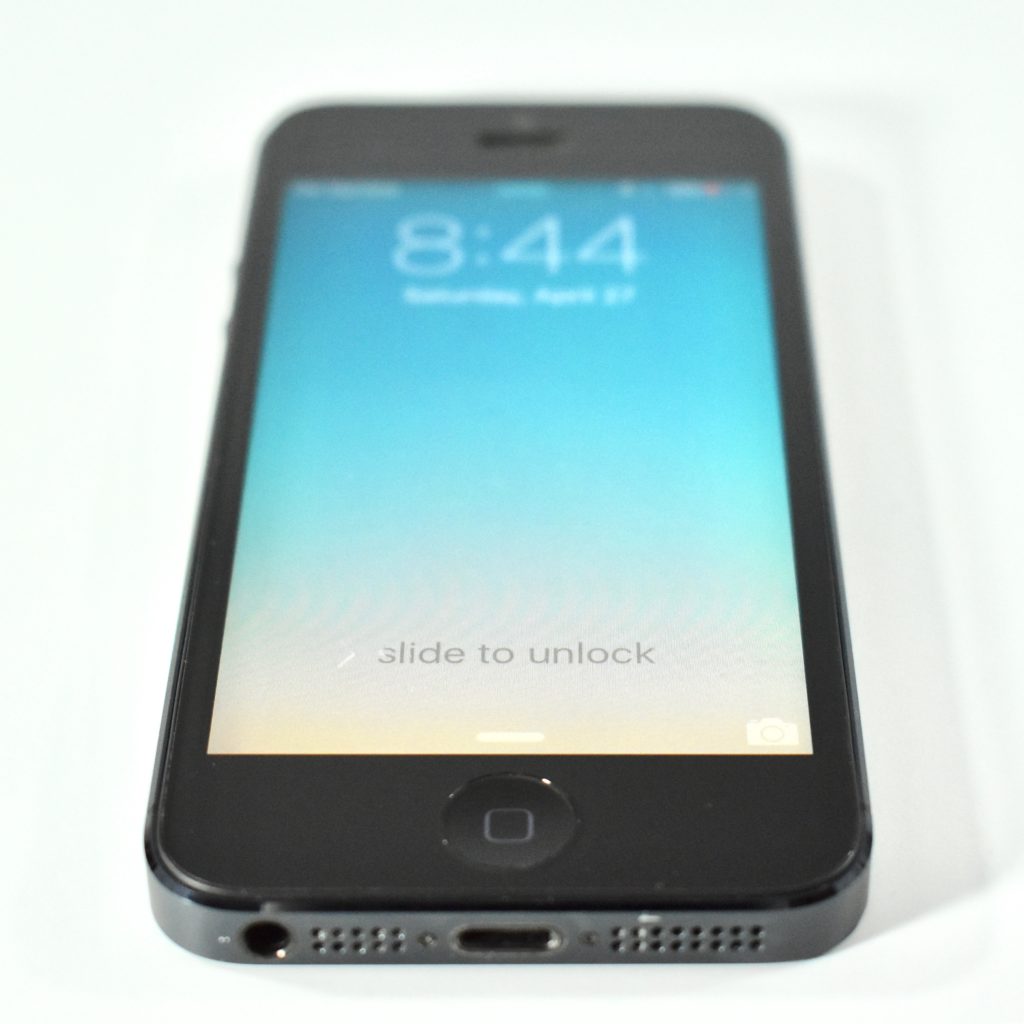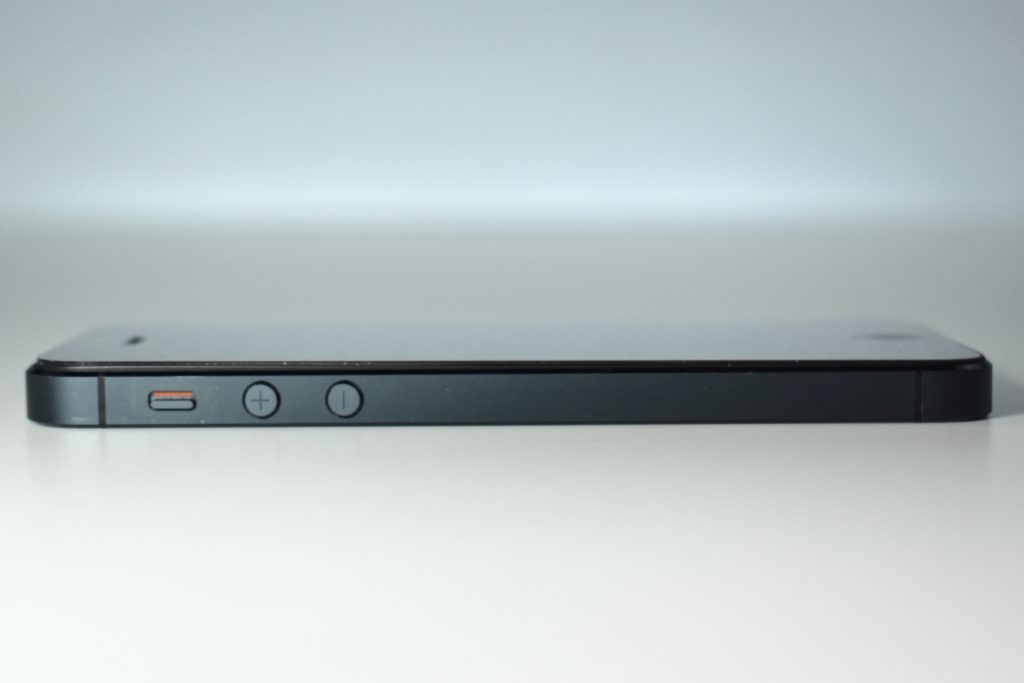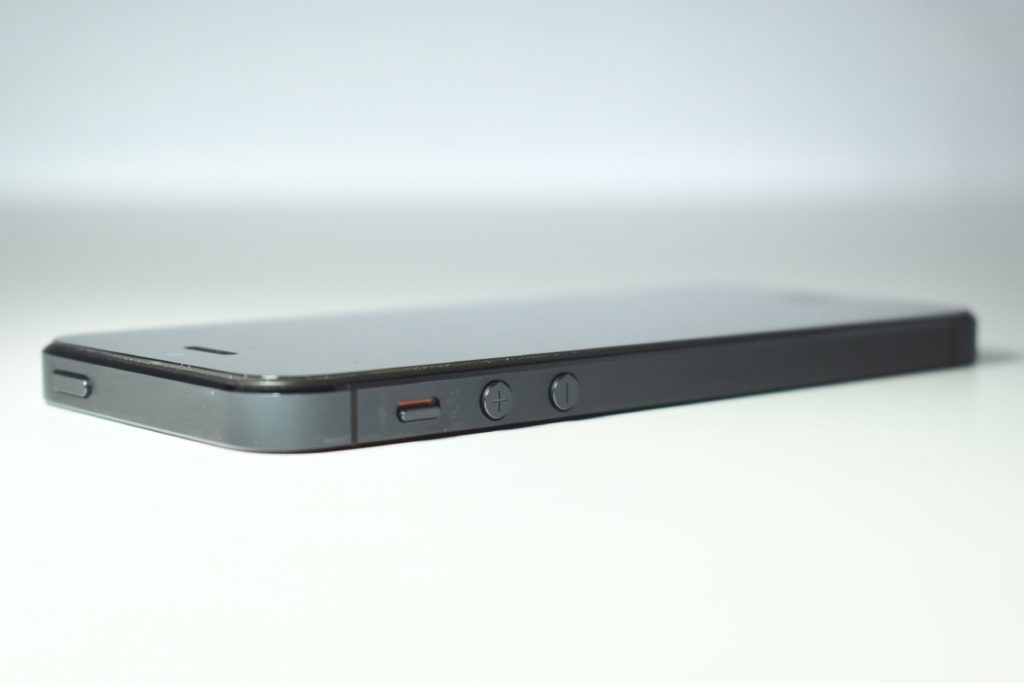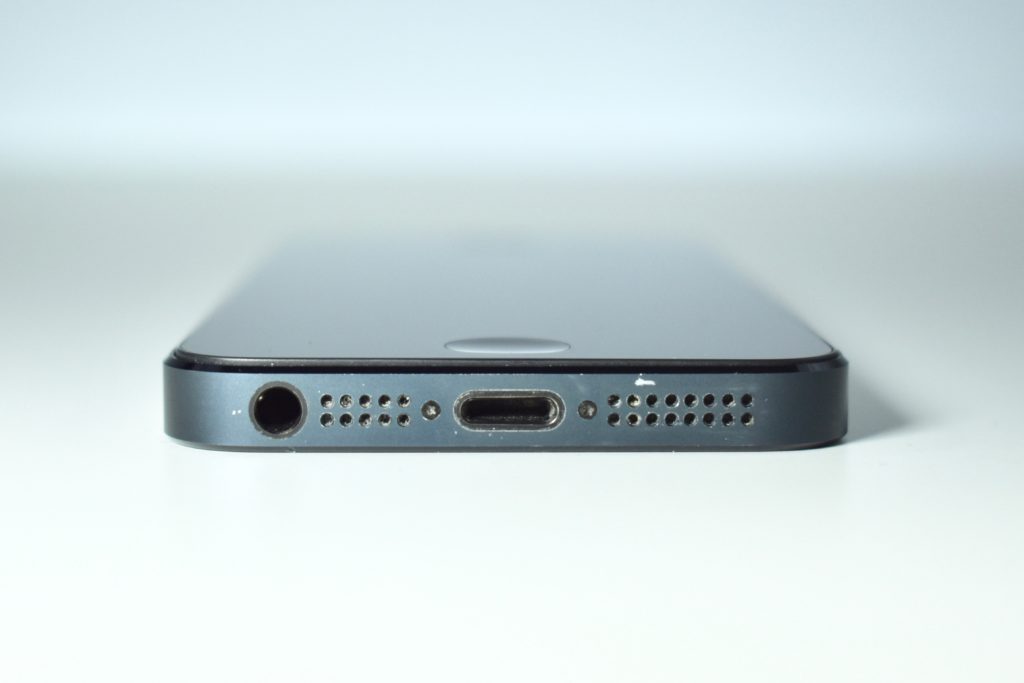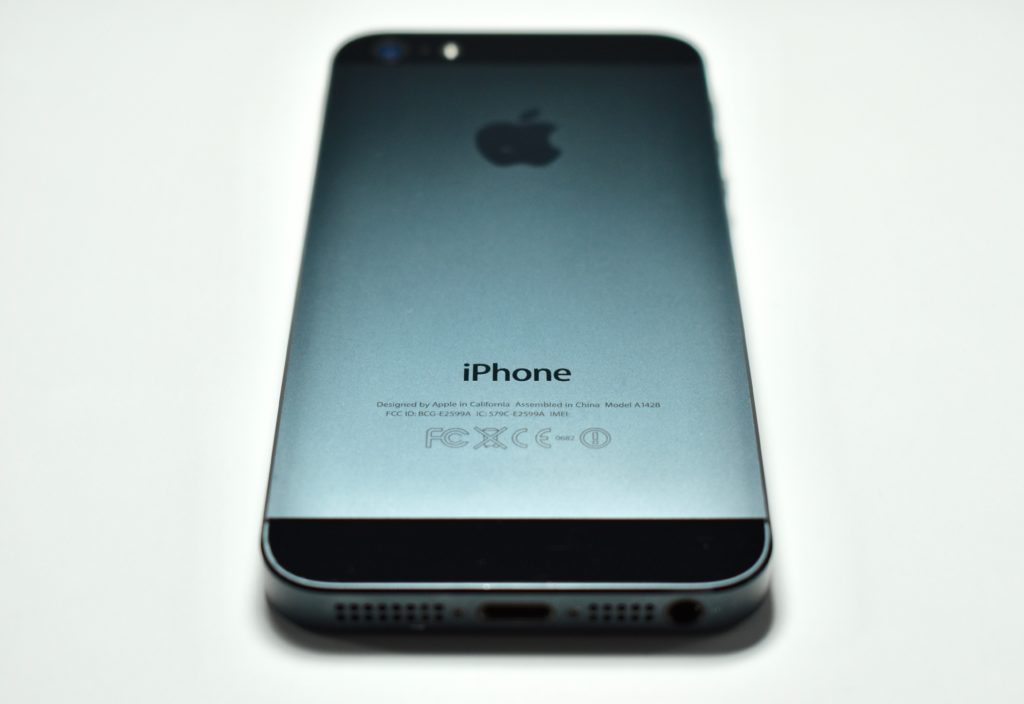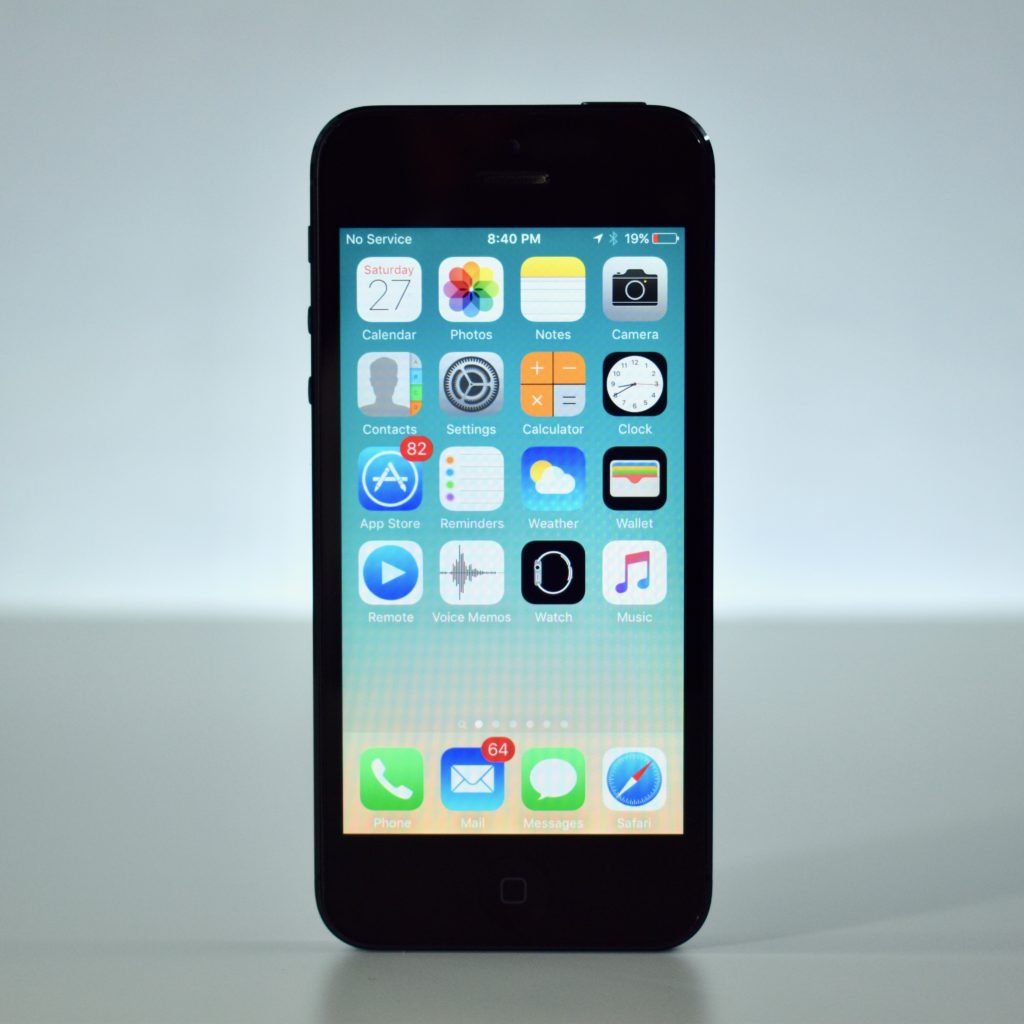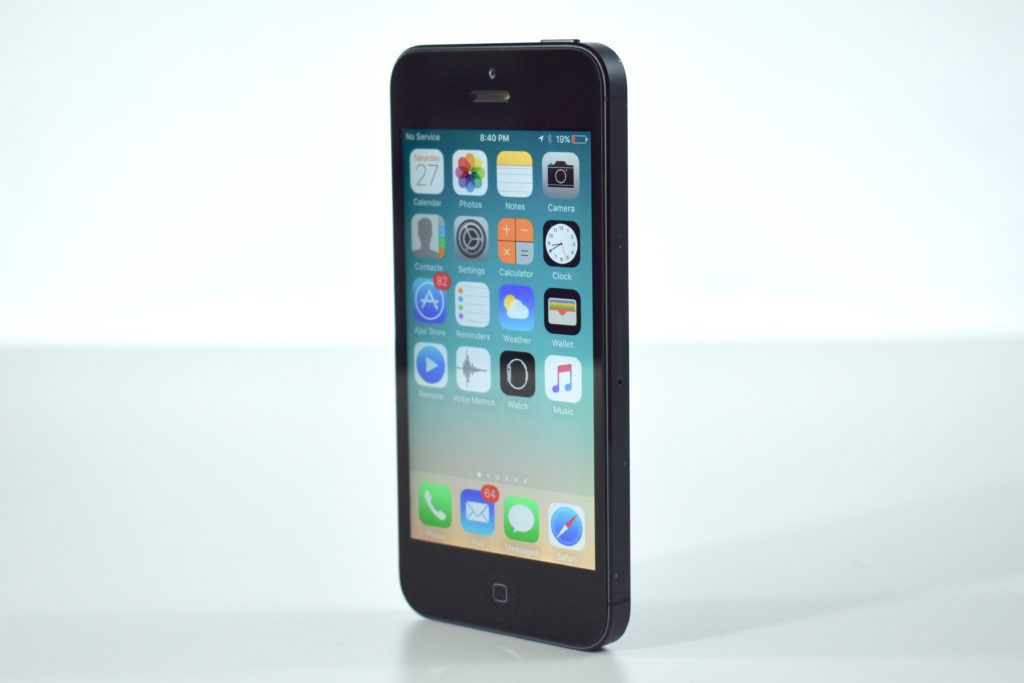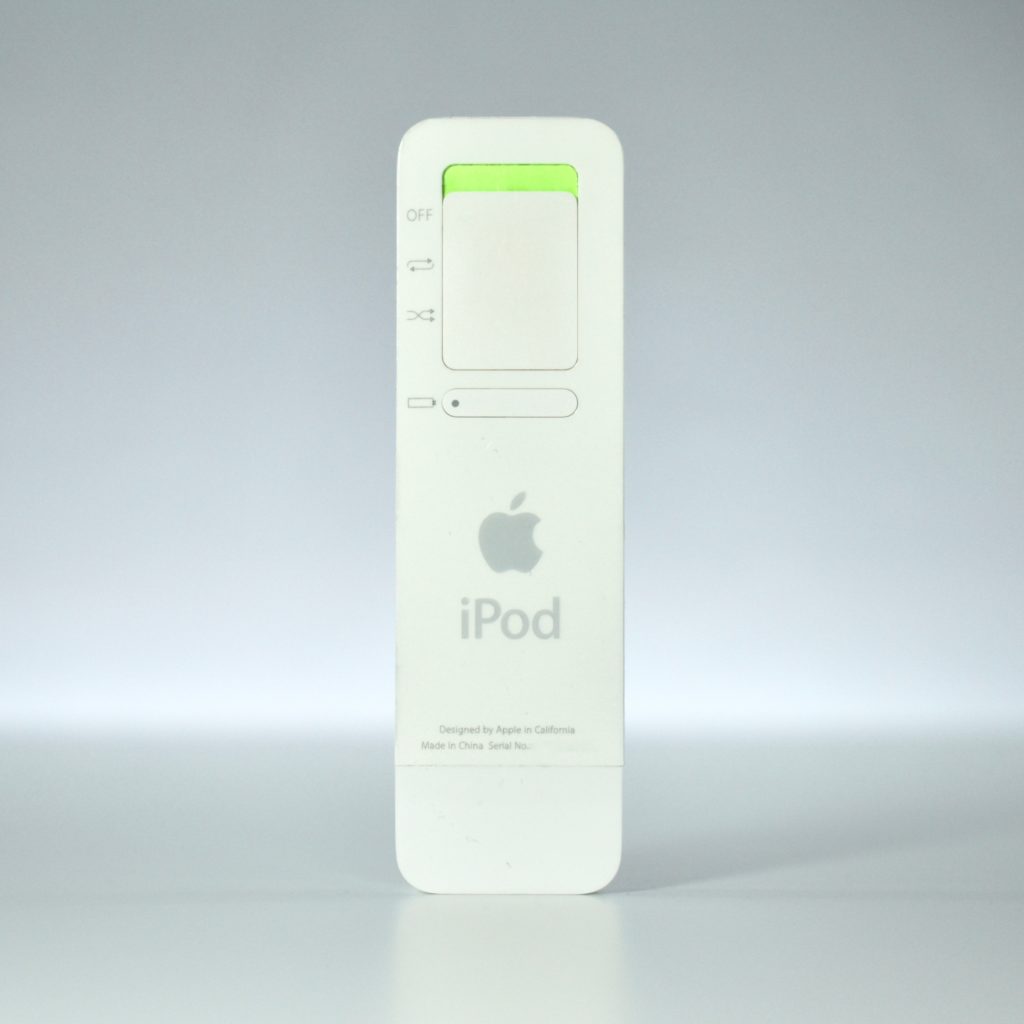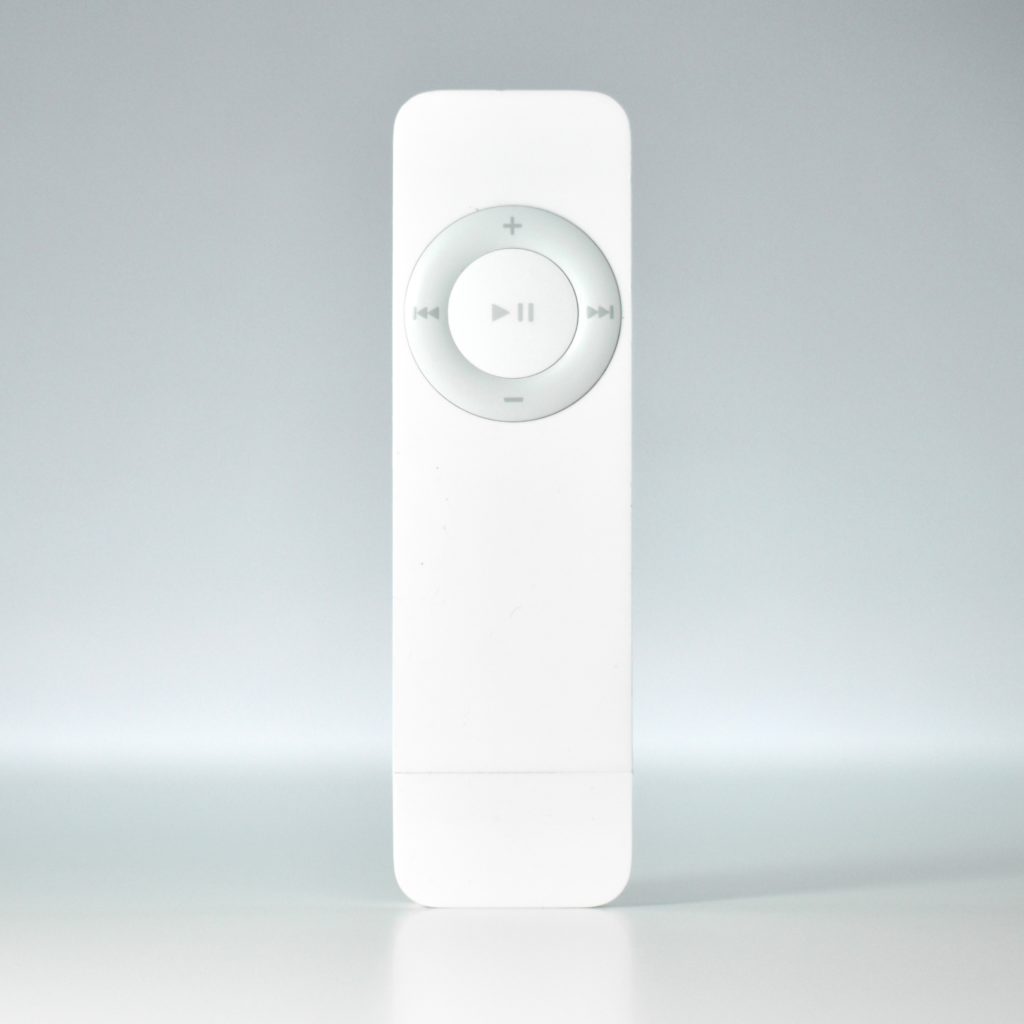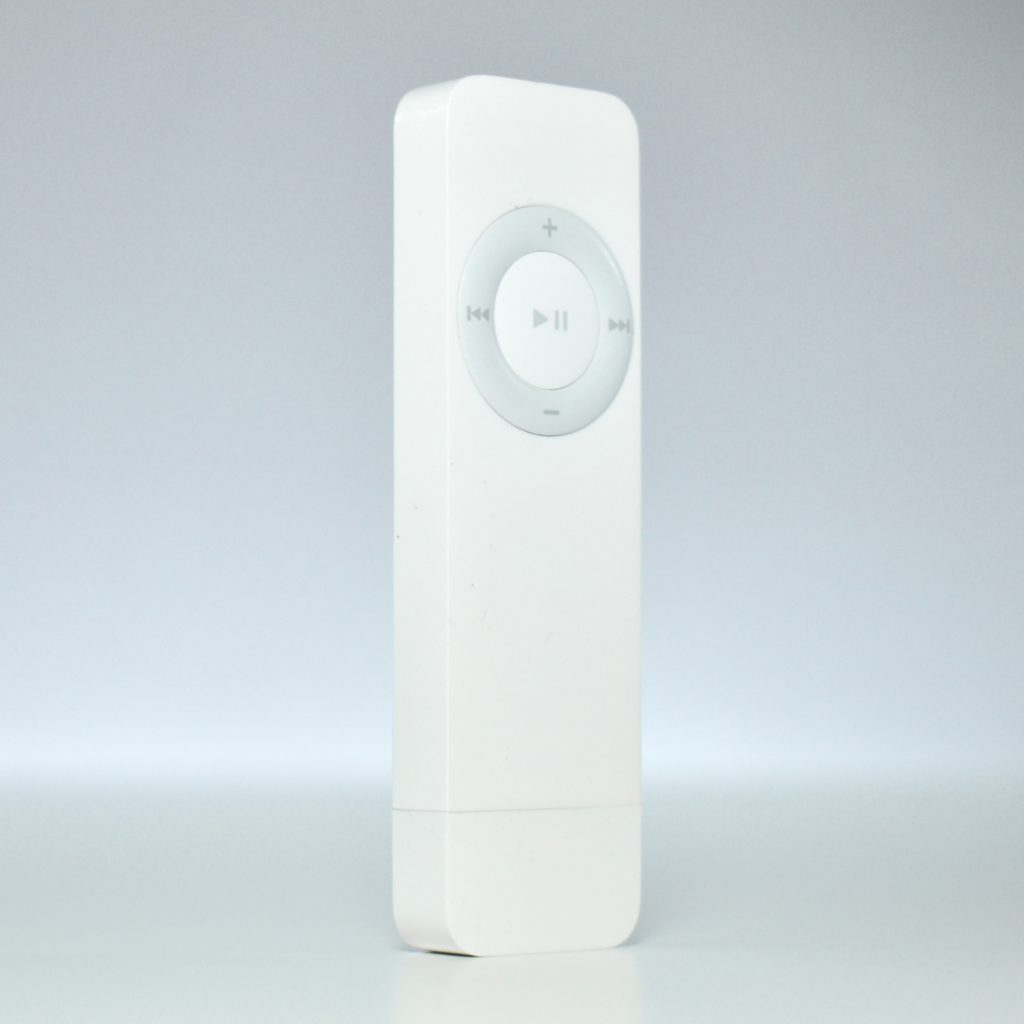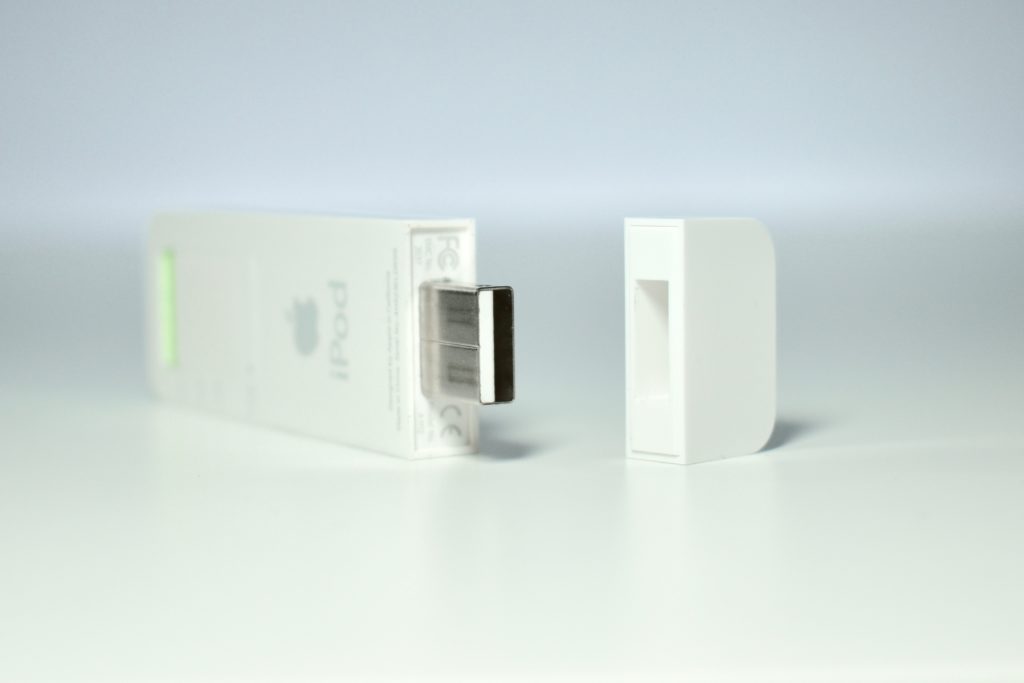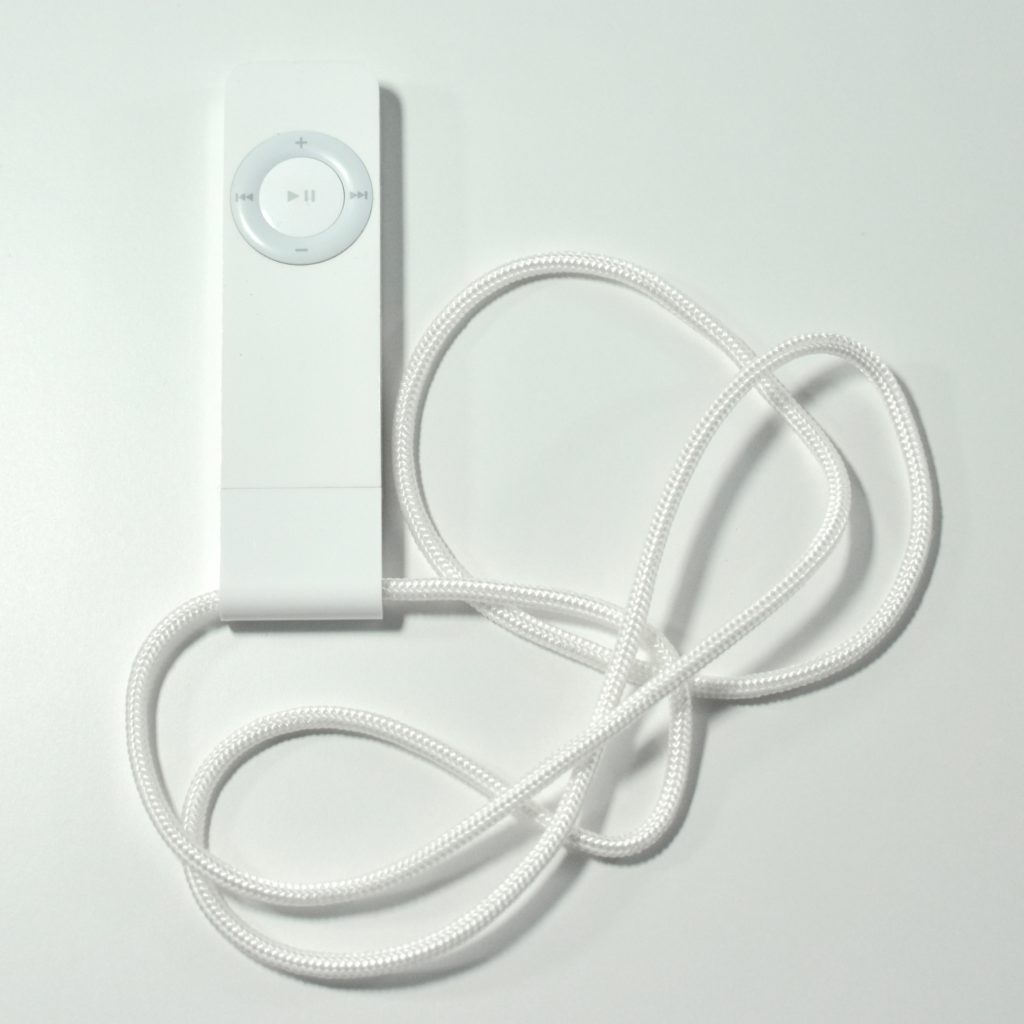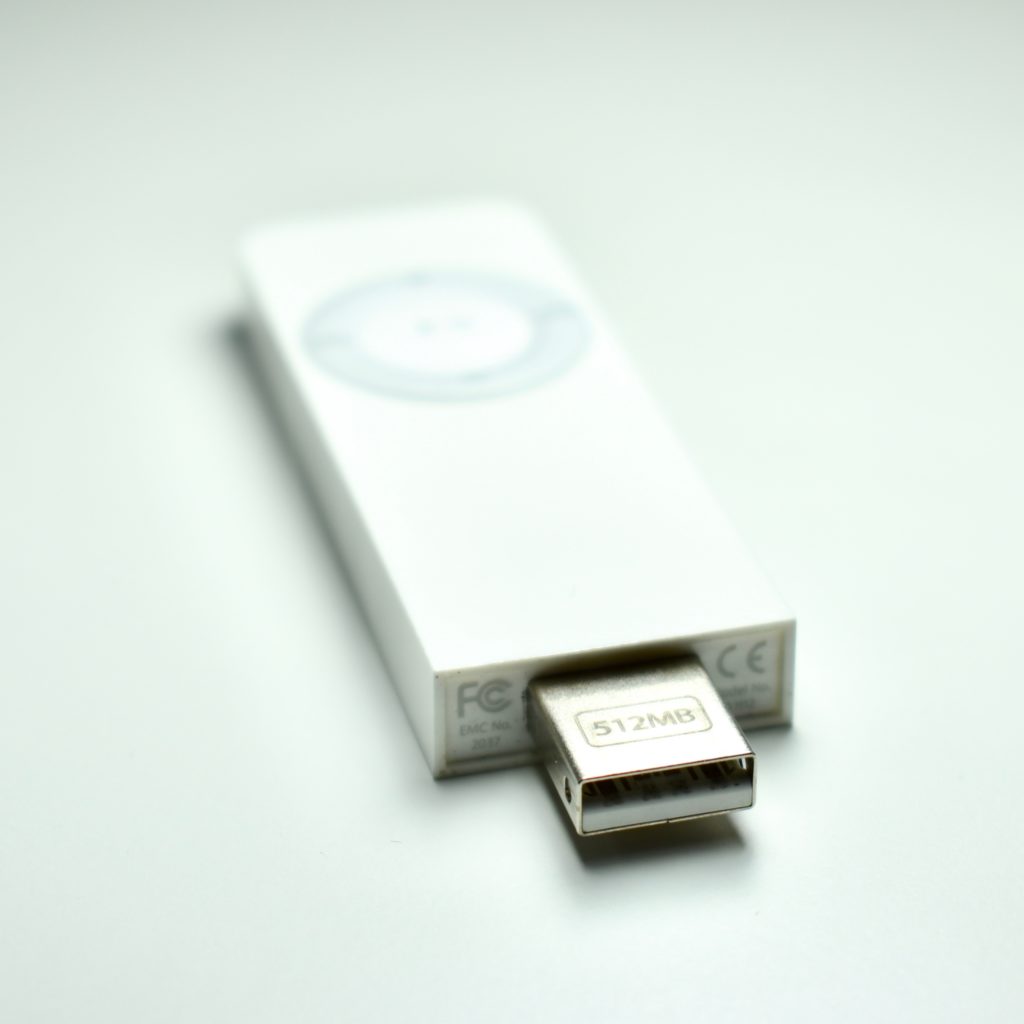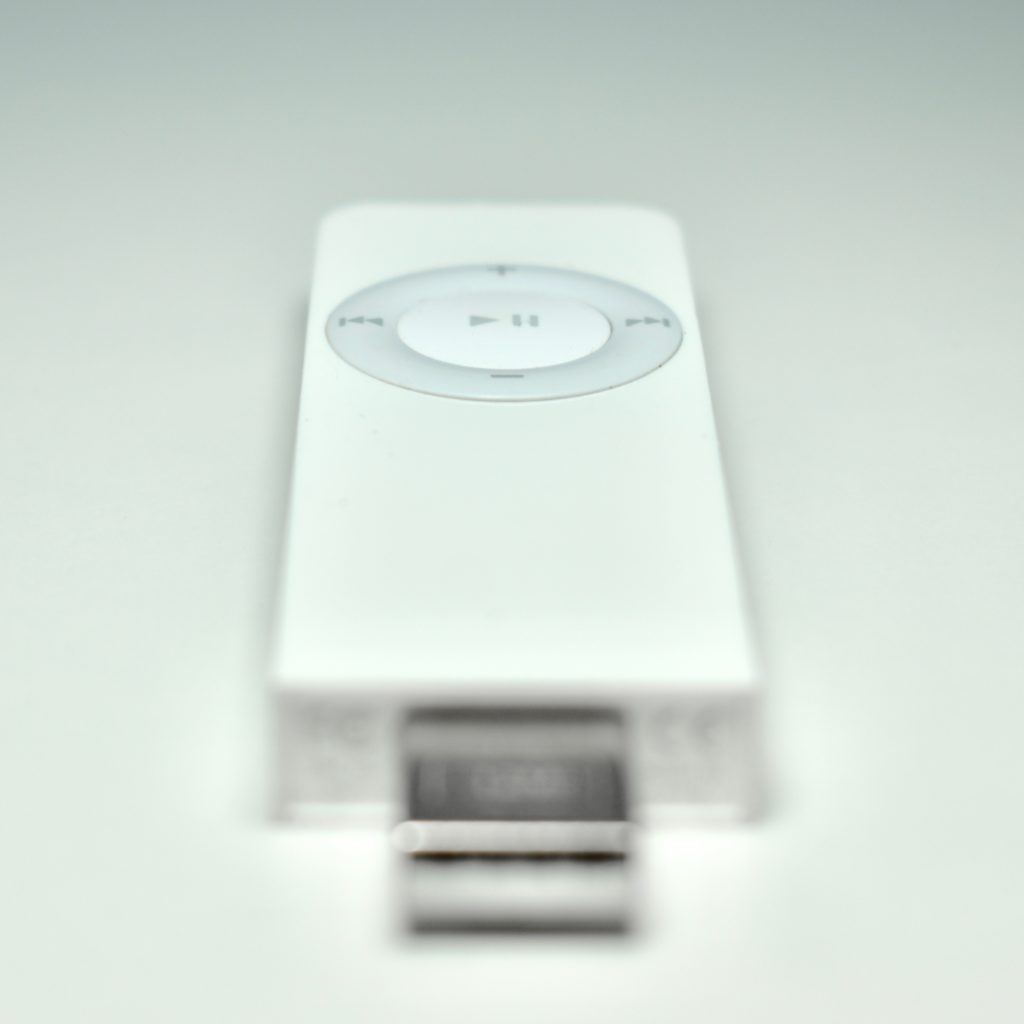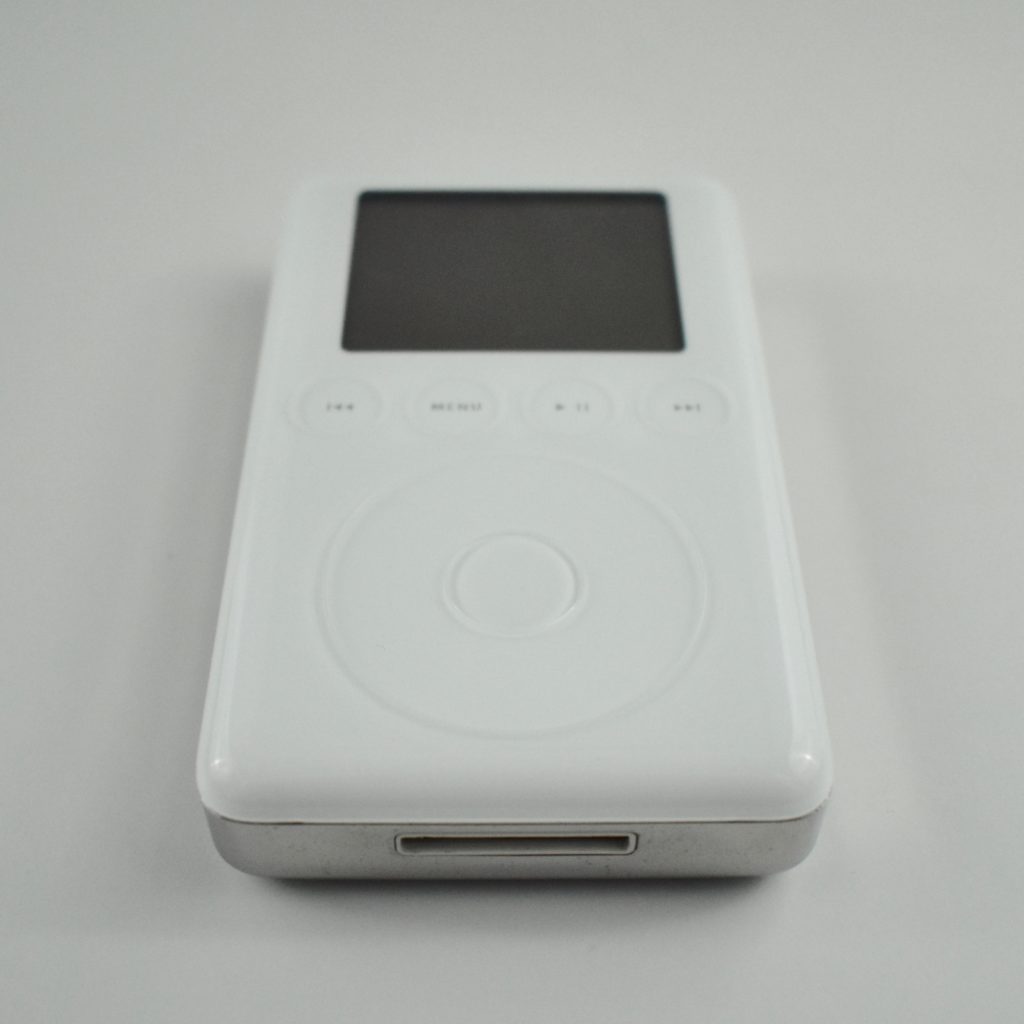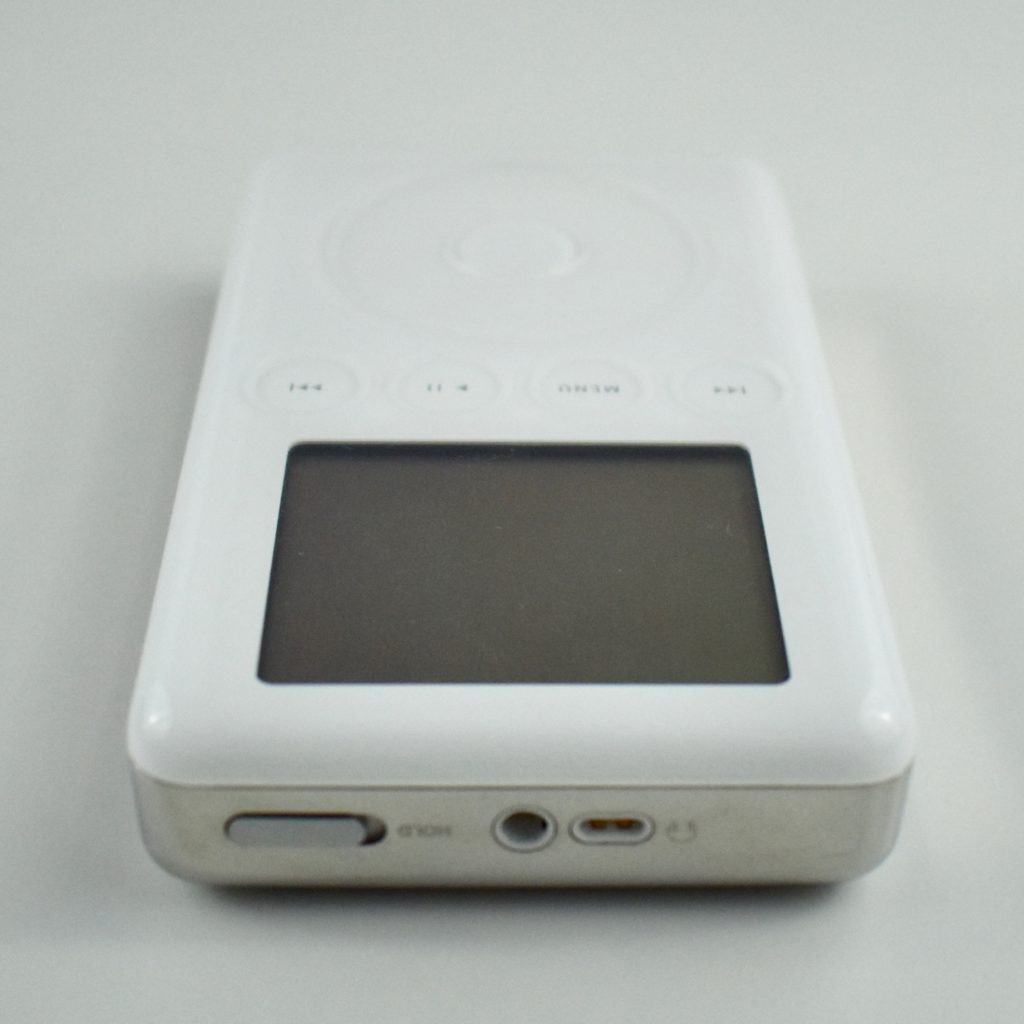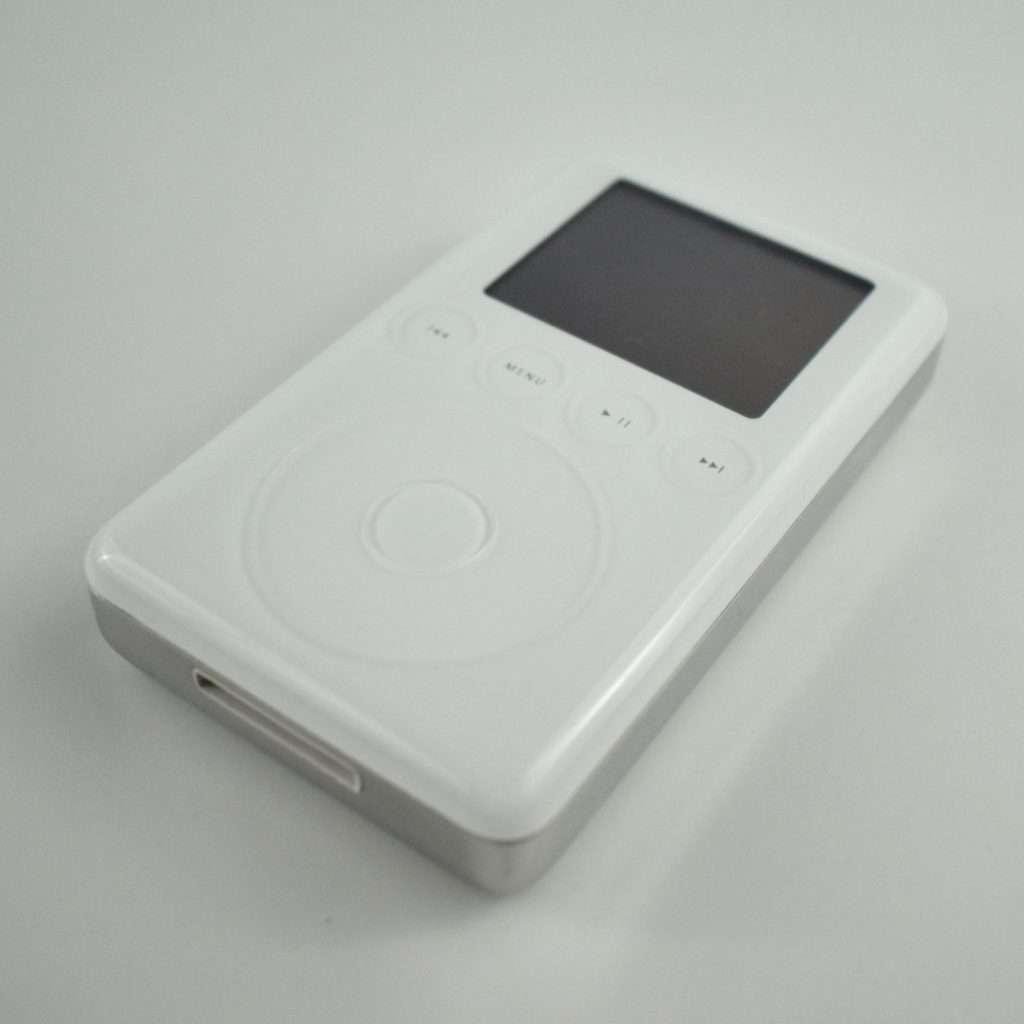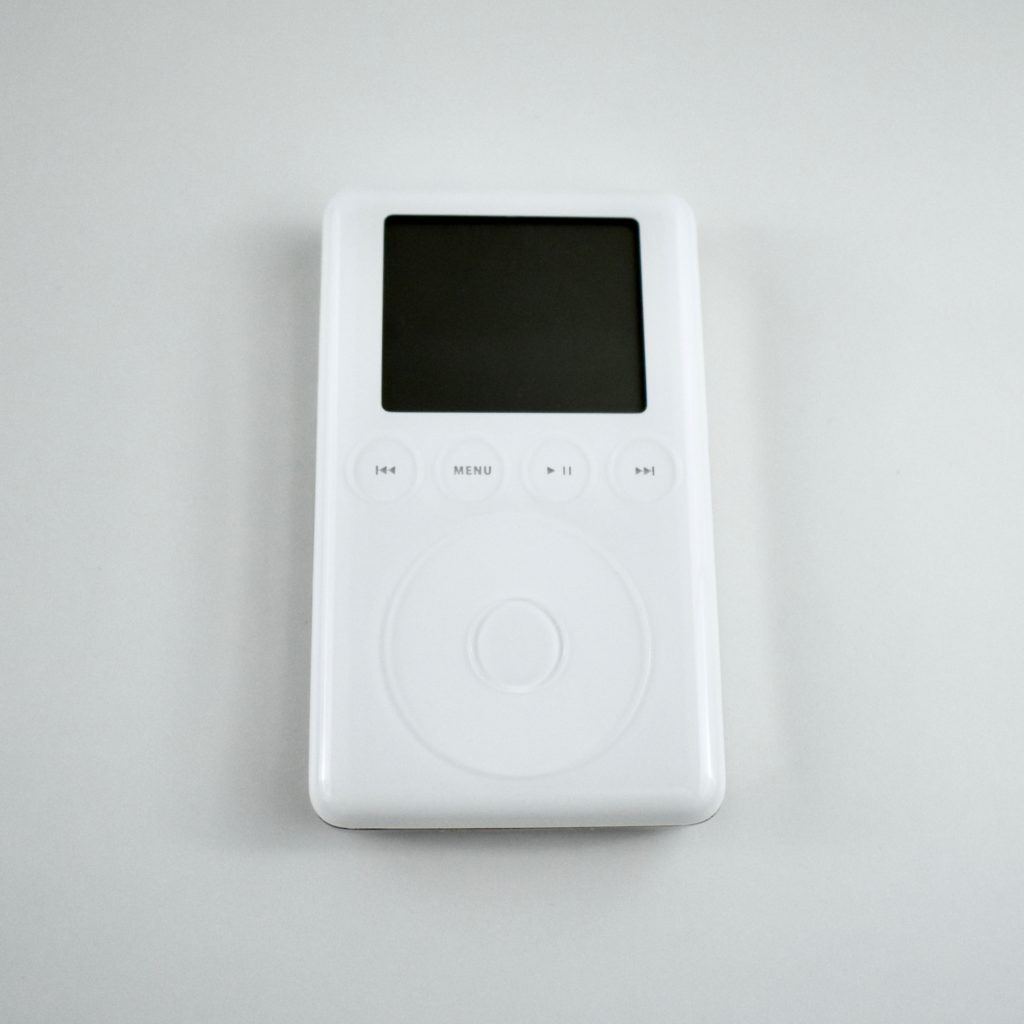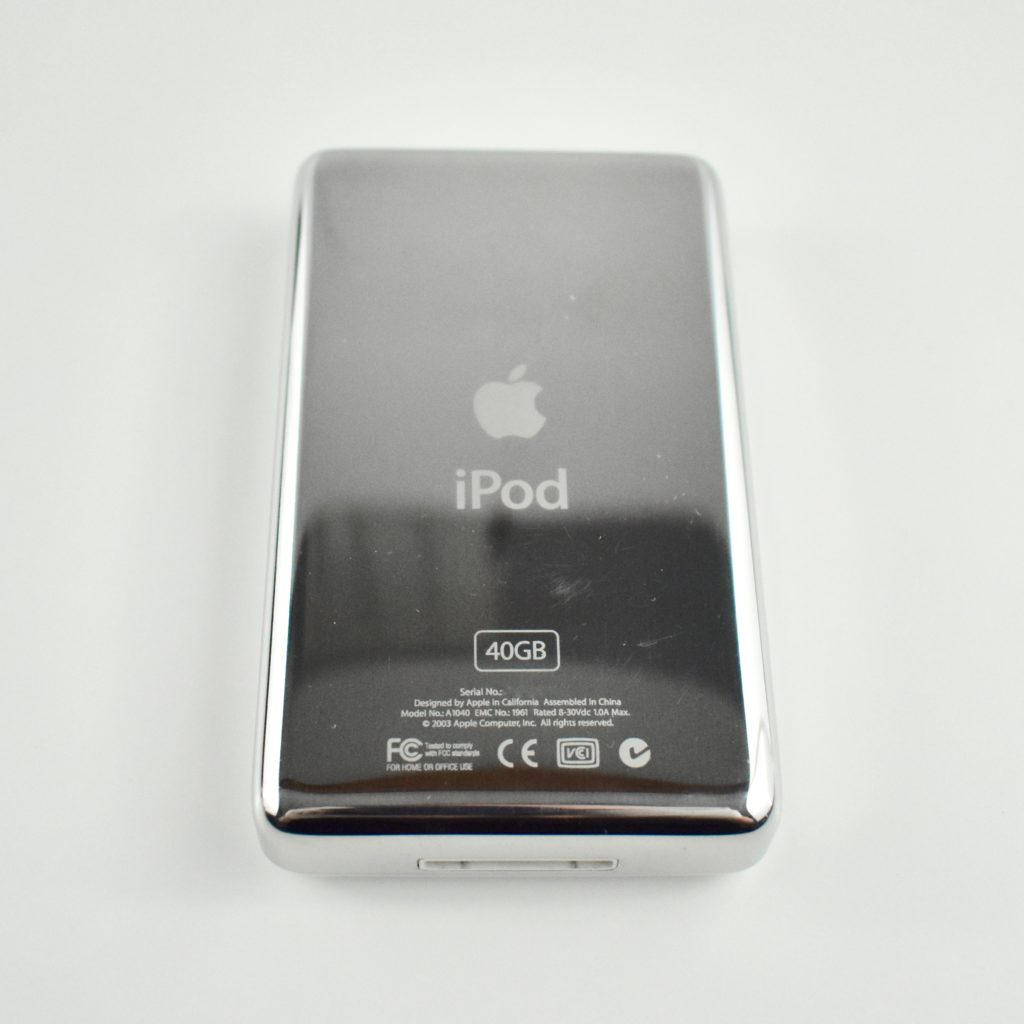The Apple Watch Series 4 was the first major redesign of the Apple Watch family and added several important functions, including health-related features. The display was over 30% larger and filled the entire screen with curved corners, it added more advanced input capabilities, more powerful processing, and more advanced sensors. This model also included GPS and cellular service for use in the United States and Canada.
Like all cellular-capable Apple Watch Series 4 models, this watch could connect to the Internet without an iPhone and send and receive phone calls with an activated cellular service. It was controlled with a Digital Crown with haptic feedback and Force Touch.
This Apple Watch Series 4 model is 44 mm (previous Apple Watch models were 38 mm and 42 mm) with a 368×448 OLED screen. This stainless steel case model used a sapphire crystal to cover the display. All Series 4 models used a ceramic and sapphire crystal back to connect to the wireless charger.
The Apple Watch Series 4 shipped with “revolutionary health capabilities, including a new accelerometer and gyroscope, which are able to detect hard falls, and an electrical heart rate sensor that can take an electrocardiogram (ECG) using the new ECG app.” When announced on September 12, 2018, the ECG feature was not available until it was released on December 6, 2018, through an iOS update.
The ECG feature on Apple Watch Series 4 marked “the first direct-to-consumer product that enables customers to take an electrocardiogram right from their wrist, capturing heart rhythm in a moment when they experience symptoms like a rapid or skipped heart beat and helping to provide critical data to physicians. The irregular rhythm notification feature on Apple Watch can now also occasionally check heart rhythms in the background and send a notification if an irregular heart rhythm that appears to be atrial fibrillation (AFib) is identified.”
In addition, a new accelerometer and gyroscope could detect falls and automatically call 911.
There were 12 different options for this particular Apple Watch Series 4 model:
- silver aluminum case with white Sport Band
- silver aluminum case with seashell (gray) Sport Loop
- gold aluminum case with Pink Sand Sport Band
- gold aluminum case with Pink Sand Sport Loop
- space gray aluminum case with black Sport Band
- space gray aluminum case with black Sport Loop
- silver stainless steel case with white Sport Band (this Apple Watch)
- silver stainless steel case with silver Milanese loop
- space black stainless steel case with black Sport Band
- space black stainless steel case with black Milanese loop
- gold stainless steel case with stone Sport Band
- gold stainless steel case with gold Milanese loop
Source: EveryMac.com, Apple.com (announcement, ECG)


